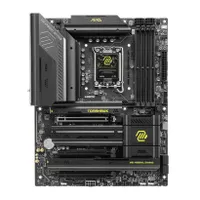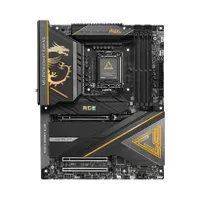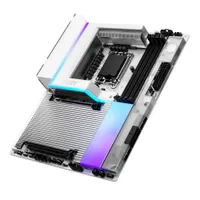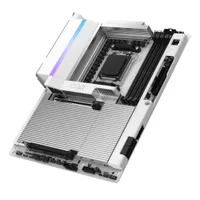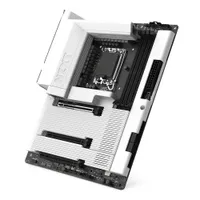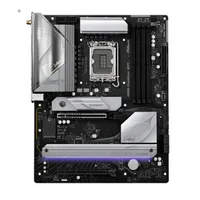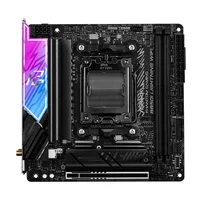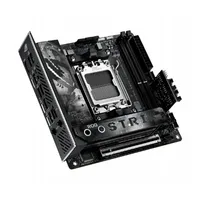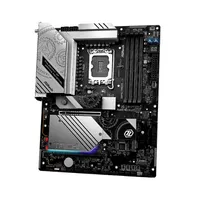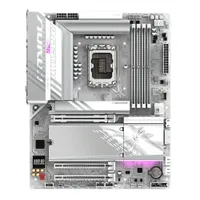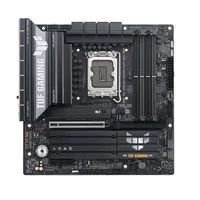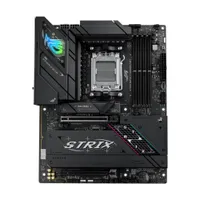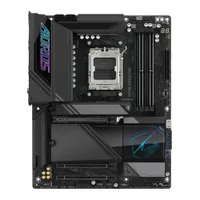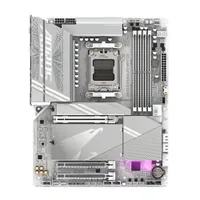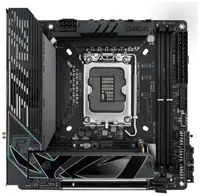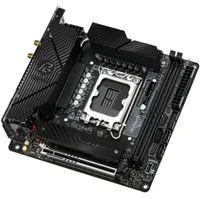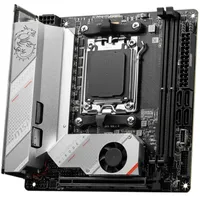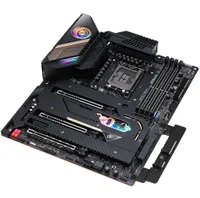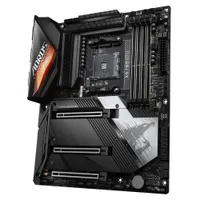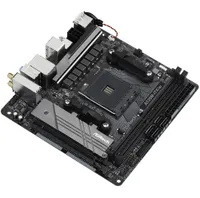Best gaming motherboards in 2025: these are the AMD and Intel mobos I'd build a system around today
The best gaming motherboards from the top Intel and AMD chipsets.
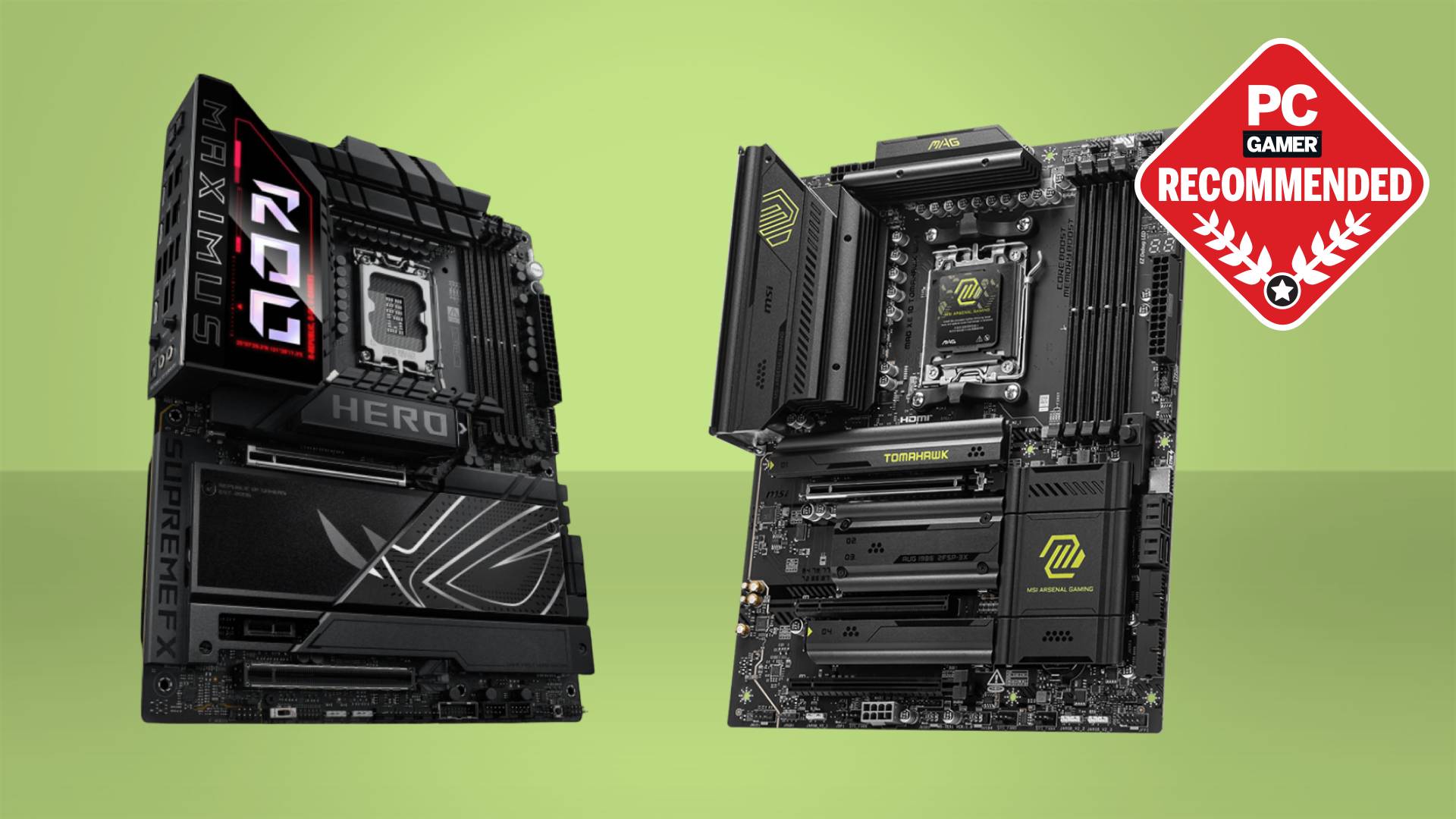
- Quick List
- 1. Best AM5 - Ryzen 9000/7000
- 2. Best budget AM5 - Ryzen 9000/7000
- 3. Best midrange AM5 - Ryzen 9000/7000
- 4. Best AM4 - Ryzen 5000/3000
- 5. Best LGA1851 - Intel Core Ultra 200S
- 6. Best budget LGA1851 - Intel Core Ultra 200S
- 7. Best LGA1700 - Intel 14/13th Gen
- 8. Best budget LGA1700 - Intel 14/13th Gen
- Also tested
- CPU chipset chart
- Where to buy
- FAQ
- Jargon buster
Think of the best gaming motherboard as the foundation for your future PC. Your motherboard dictates what your gaming PC can and can not do. It also tells what components you should buy since not all PC parts fit into all motherboards. A good motherboard should ideally provide you with worry-free gaming lasting multiple CPU and GPU generations.
When it comes to AMD's Zen 5 processors, the best AMD AM5 (X870) gaming motherboard is the MSI MAG X870 Tomahawk, thanks to its excellent feature set for a very reasonable price, but those looking for a more budget offering should check out our best B650 gaming motherboard pick, the Asus TUF Gaming B650-Plus WiFi.
If you're on current-gen Intel, the absolute best is the Asus ROG Maximus Z890 Hero, but if you're using a 13th or 14th Gen Intel CPU you should check out the MSI MAG Z790 Tomahawk WiFi. We've put a couple of budget Intel motherboard picks below, too, for whichever generation you're on.
Regardless of whether you're looking for boards with an AM5, AM4, LGA 1700 or the brand spanking new LGA 1851 socket, this guide covers all your bases for a great gaming PC build. If you want something smaller than what we're showing here, however, then check out our guide to the best Mini-ITX motherboards.
The Quick List
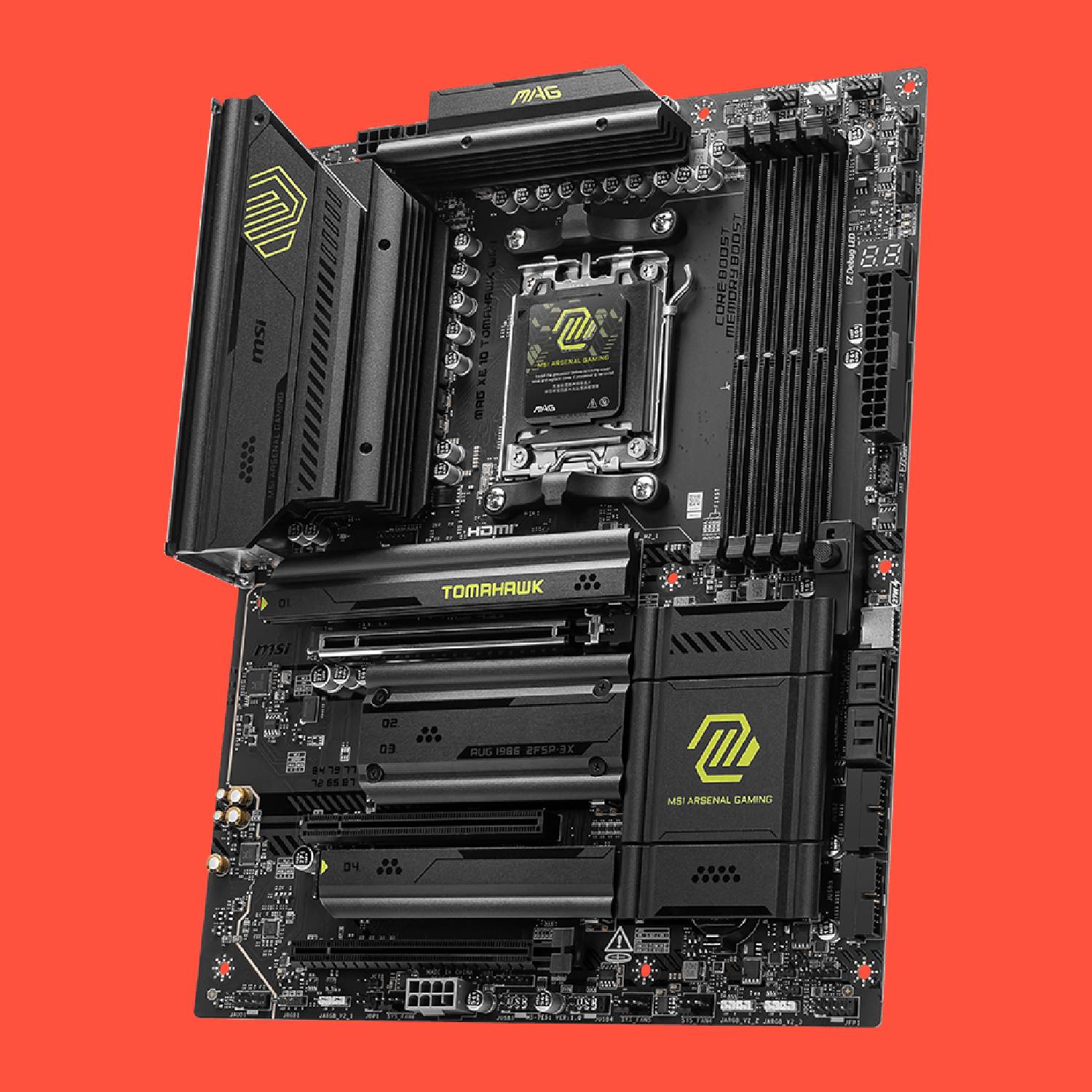
The best AMD AM5
With up to 21 USB ports, superb build quality, and excellent thermal and power handling chops, this MSI board is the Zen 5-supported X870 board we'd go for right now. It's still a fair amount of cash compared to some, but a great all-rounder.
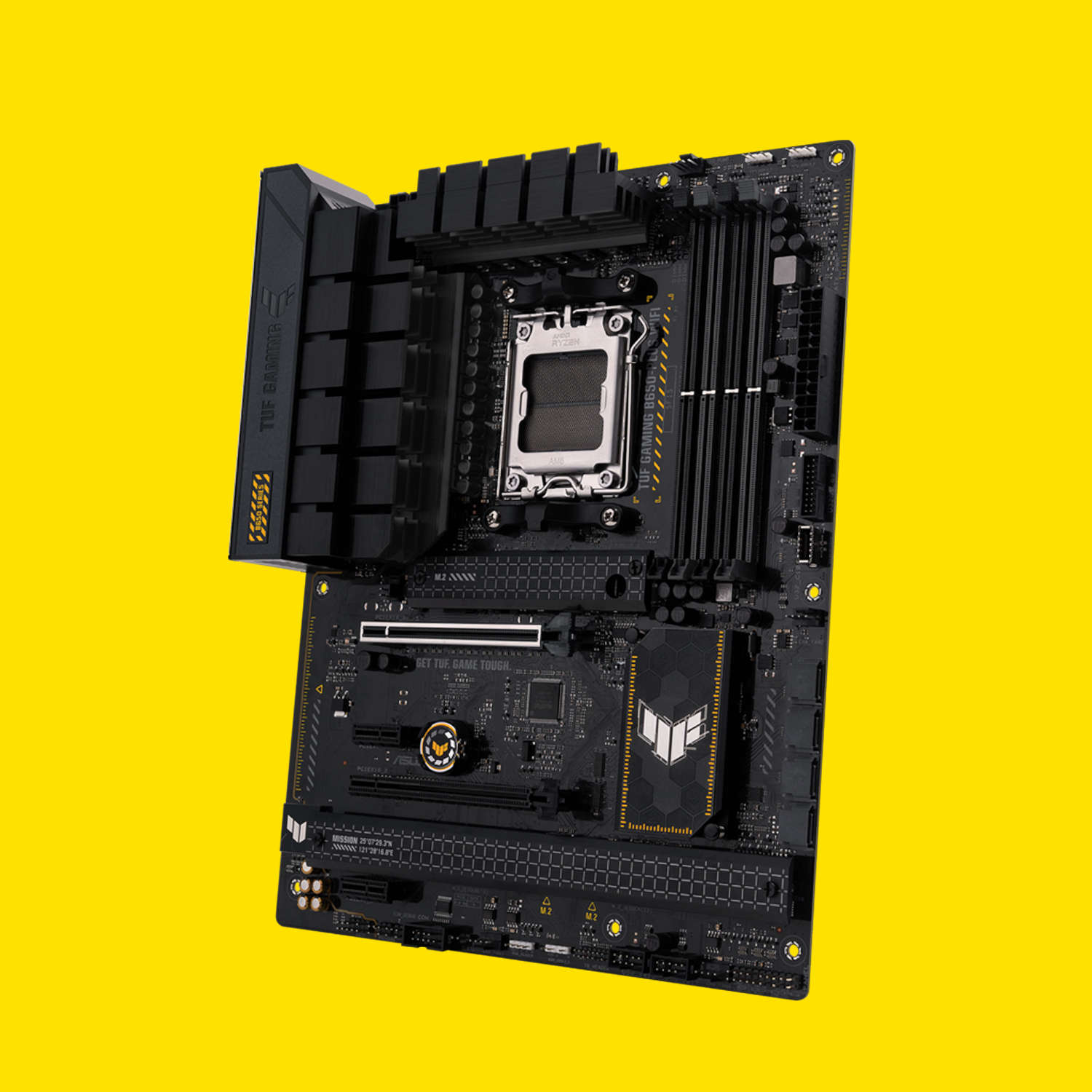
The best budget AM5
While it's a little on the pricey side for a B650 motherboard, you won't feel short-changed with this Asus TUF Gaming model. Three M.2 slots for SSDs, lots of USB ports, and excellent support for high-power Ryzen series processors make this a really solid buy.

The best midrange AM5
Affordable and rather pretty, this motherboard has tonnes of USB ports, WiFi 7 support and is PCIe 5.0 M.2 and GPU compatible. It lacks some more premium features and has a pretty basic EFI, but does quite a lot for the money.
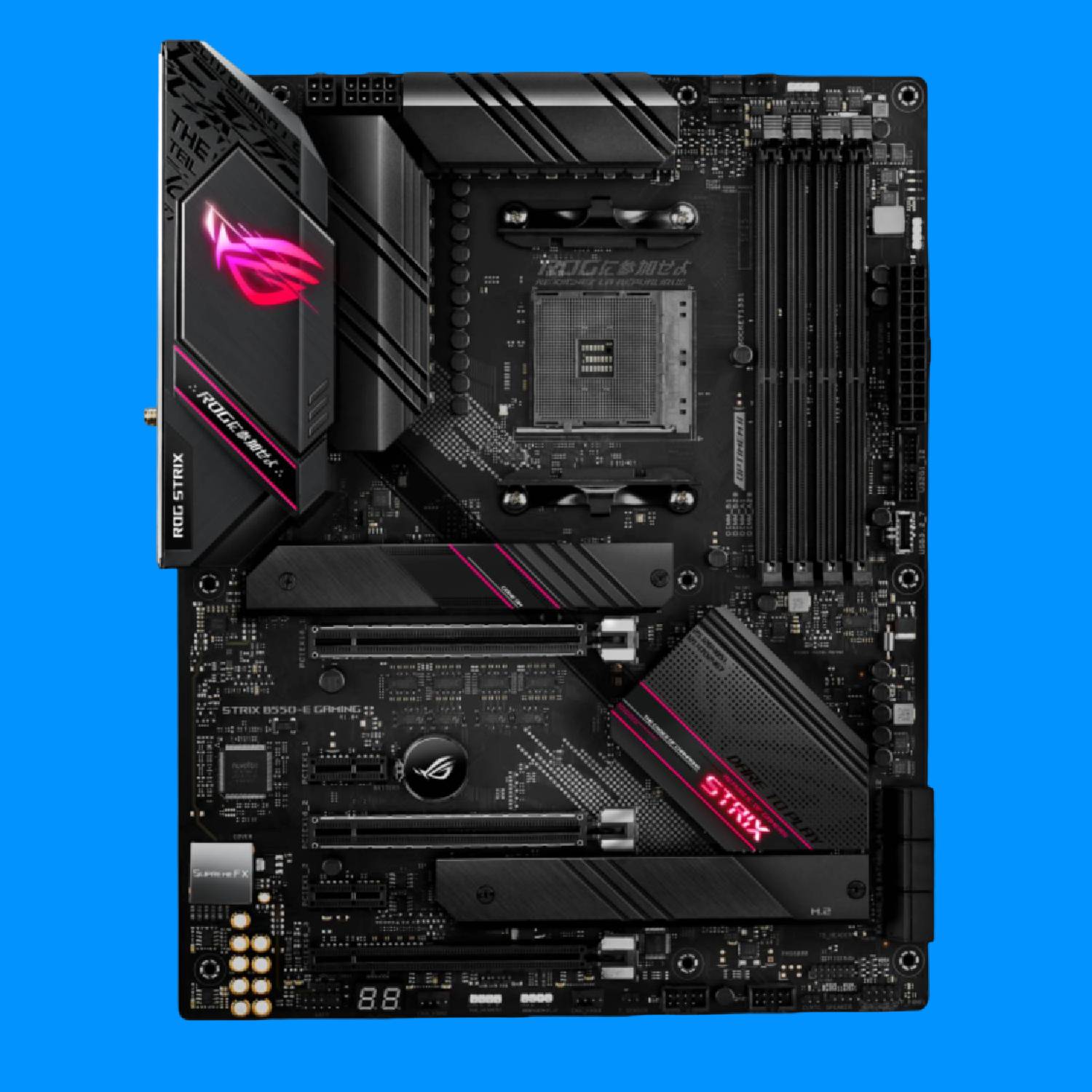
The best AMD AM4
This is the very best AMD B550 motherboard you can buy. Period. It's not even super expensive, despite its comprehensive feature set. If you're building a budget AM4 gaming PC, then this will be perfect for it.

The best Intel LGA1851
If a motherboard for your new Arrow Lake Intel chip is what you desire, it's very difficult to find a board with more features, ports, slots and overall options than this. It's darn near perfect, but the price tag is seriously hefty as a result.
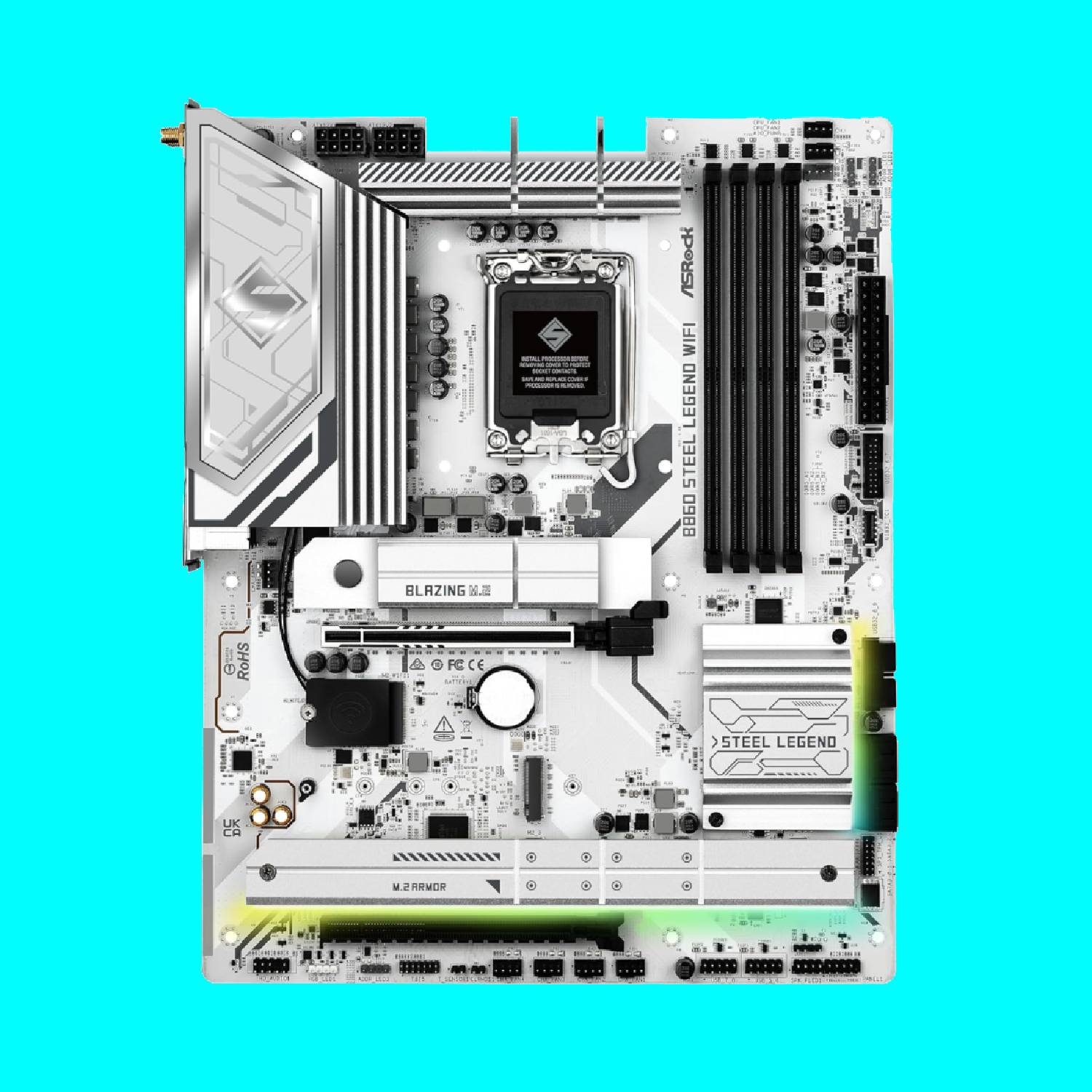
The best budget LGA1851
This is the best bang for your buck if you're looking for a motherboard to sit under your Intel Core Ultra 200S CPU. It's got a ton of ports, it keeps itself and its M.2 SSDs cool, and it even looks rather dashing thanks to its white-and-steel aesthetic.
⬇️ Click to load more of the best gaming motherboards⬇️
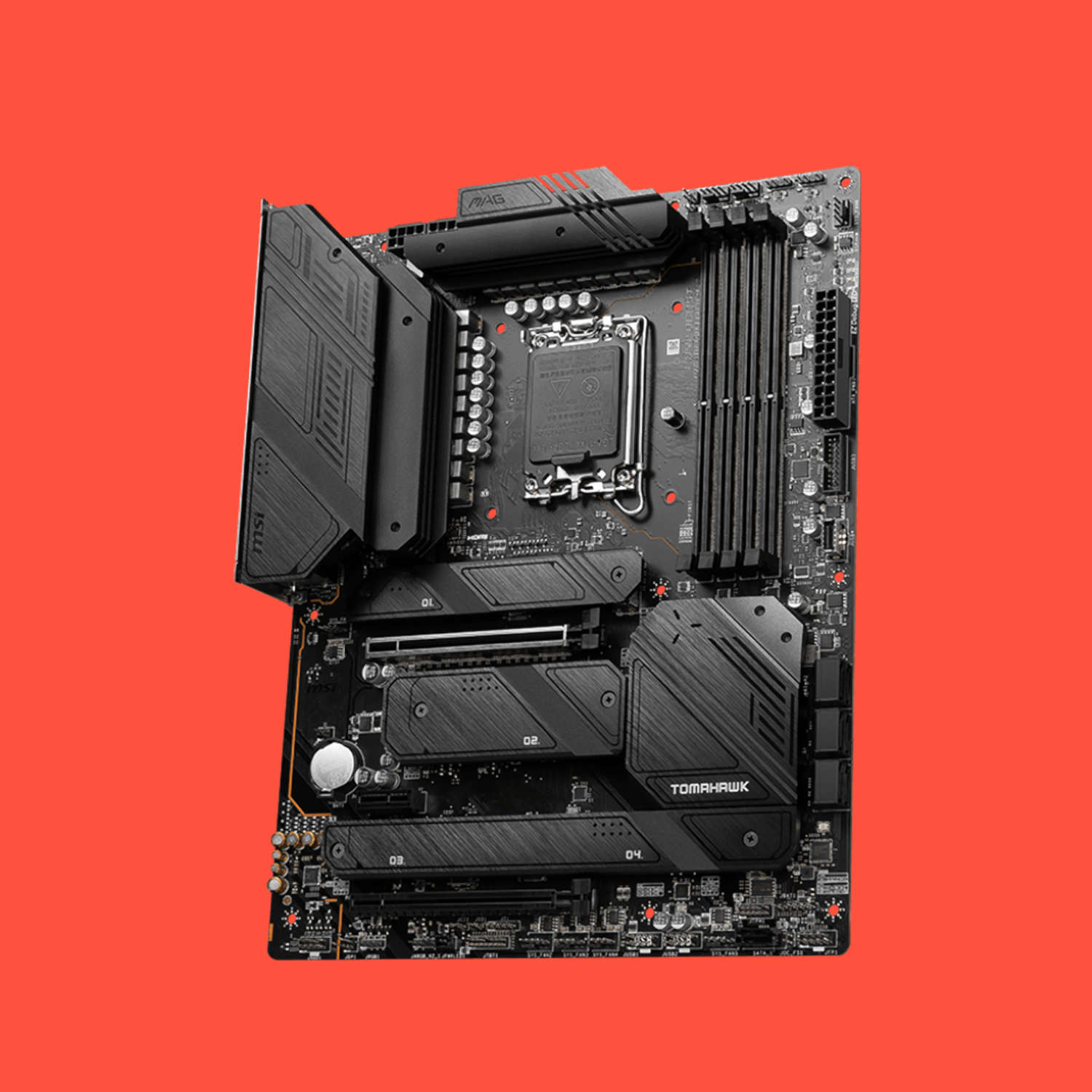
The best Intel LGA1700
Considering the huge number of slots for SSDs and ports for USB devices, you'd expect this premium Z790 board to be really expensive. But it's not and it's far cheaper than other models which offer little more. It's not the best for serious overclocking features, though.
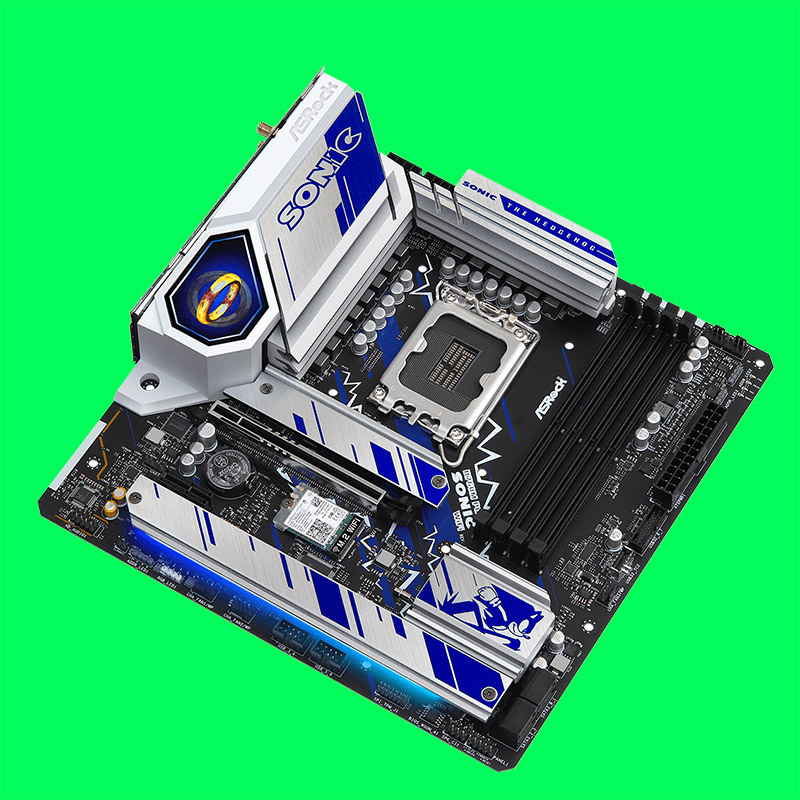
The best budget LGA1700
The delightfully retro ASRock B760M PG Sonic WiFi is an excellent choice for a user after a value-for-money board without losing too much in the way of features. It'll happily power an i9 CPU and it's generally cheaper now than it was at the time we reviewed it a year or so back.

Ever since building his first gaming PC as a teen, Dave's been fascinated by their guts and has turned poking, prodding, and testing systems into a profession. Over the last 20 years or so he's been testing some of the best motherboards, gaming PCs, and all sorts of exotic hardware combinations, which makes him the best person to turn to when it comes to picking the right motherboard for you.
October 21, 2025: No changes to our top recommendations for the best motherboards, but we have added the MSI MAG Z890 Tomahawk Wifi and MEG Z890 Ace to the Also Tested section. The former is very good but isn't the best for gaming, especially compared to the Gigabyte Z890 Aorus Elite. The Z890 Ace is jam-packed with super-fast USB ports and M.2 slots, but little else.
July 21, 2025: The main changes in this update include three motherboards from NZXT in the Also Tested section (N7 Z890, N9 Z890, N9 X870E—all solid products but too expensive or lack important extras to be crowned outright winners) and some amendments to our top recommendations, to clarify hardware details and highlight alternatives in cases where the motherboard is difficult to find new.
July 1, 2025: Added the ASRock B860 Steel Legend Wi-Fi as our pick for the best budget Intel socket 1851 motherboard. This board for Core Ultra 200S processors offers a pretty incredible feature set for the affordable price tag, and it even looks nice thanks to its colour scheme. We also added to our Also Tested section, created a separate CPU chipset chart section, and changed the guide's heading format to make it easier to find the right motherboard for your CPU.
Best AMD gaming motherboard (AM5)
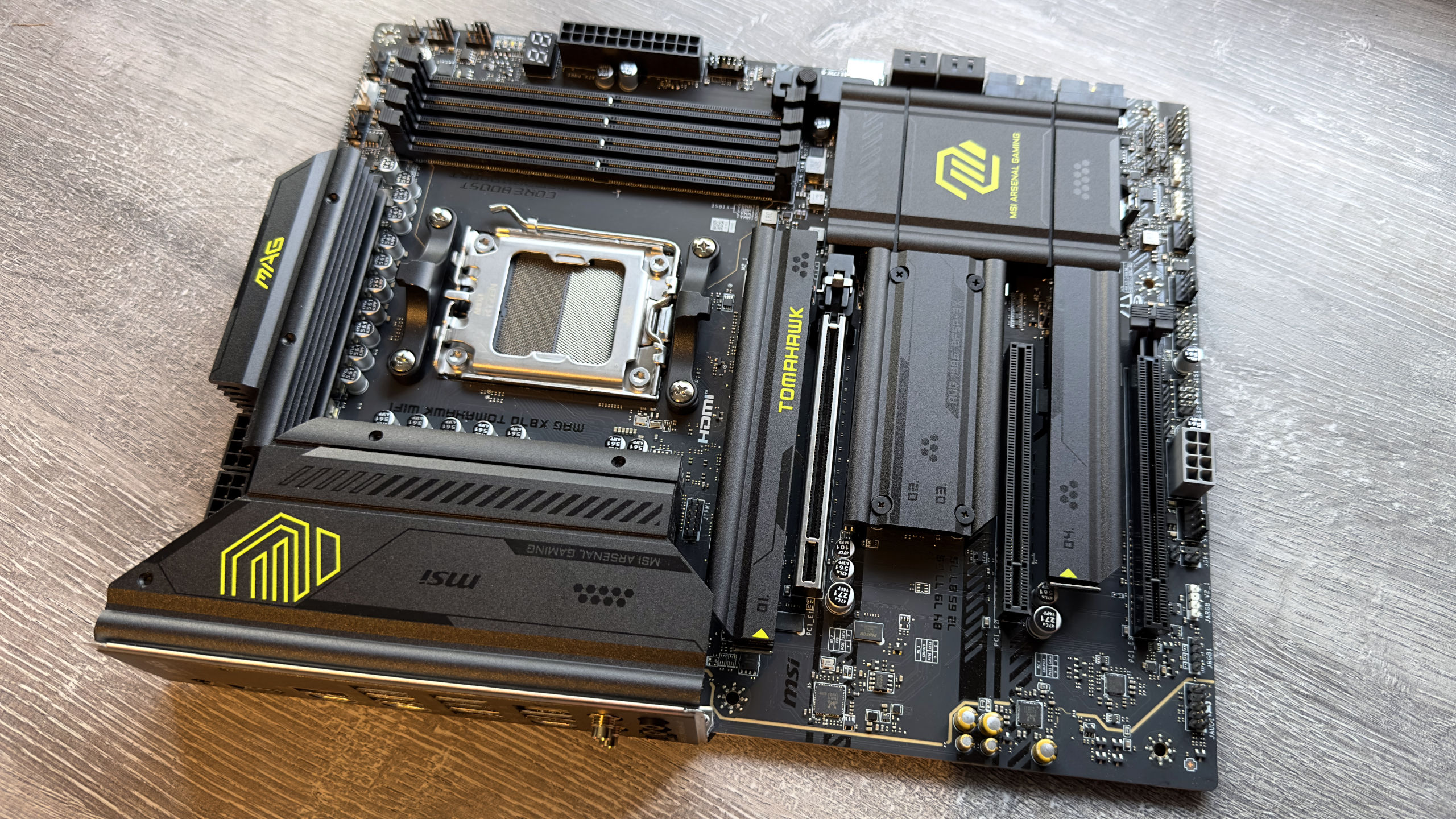
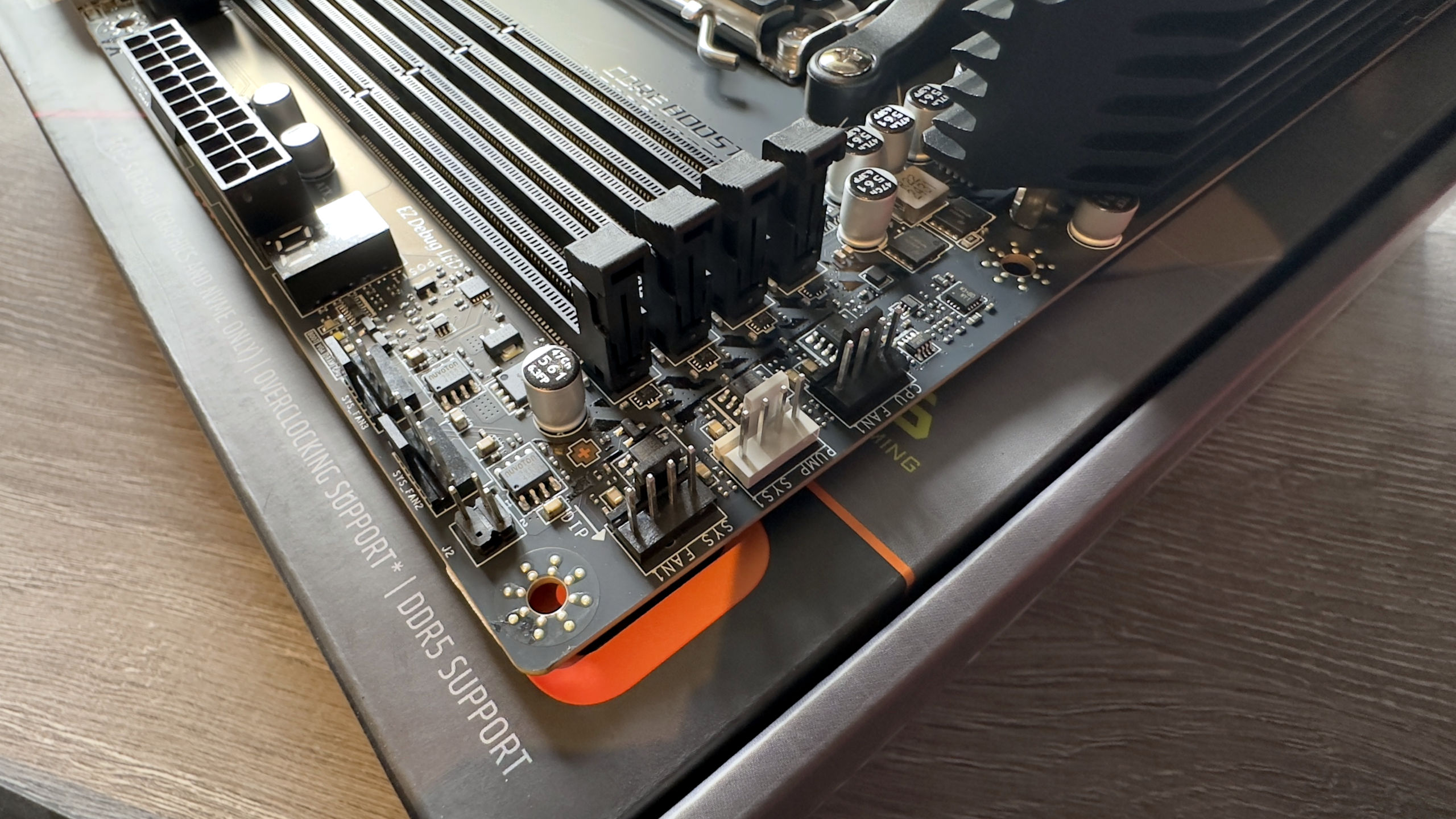

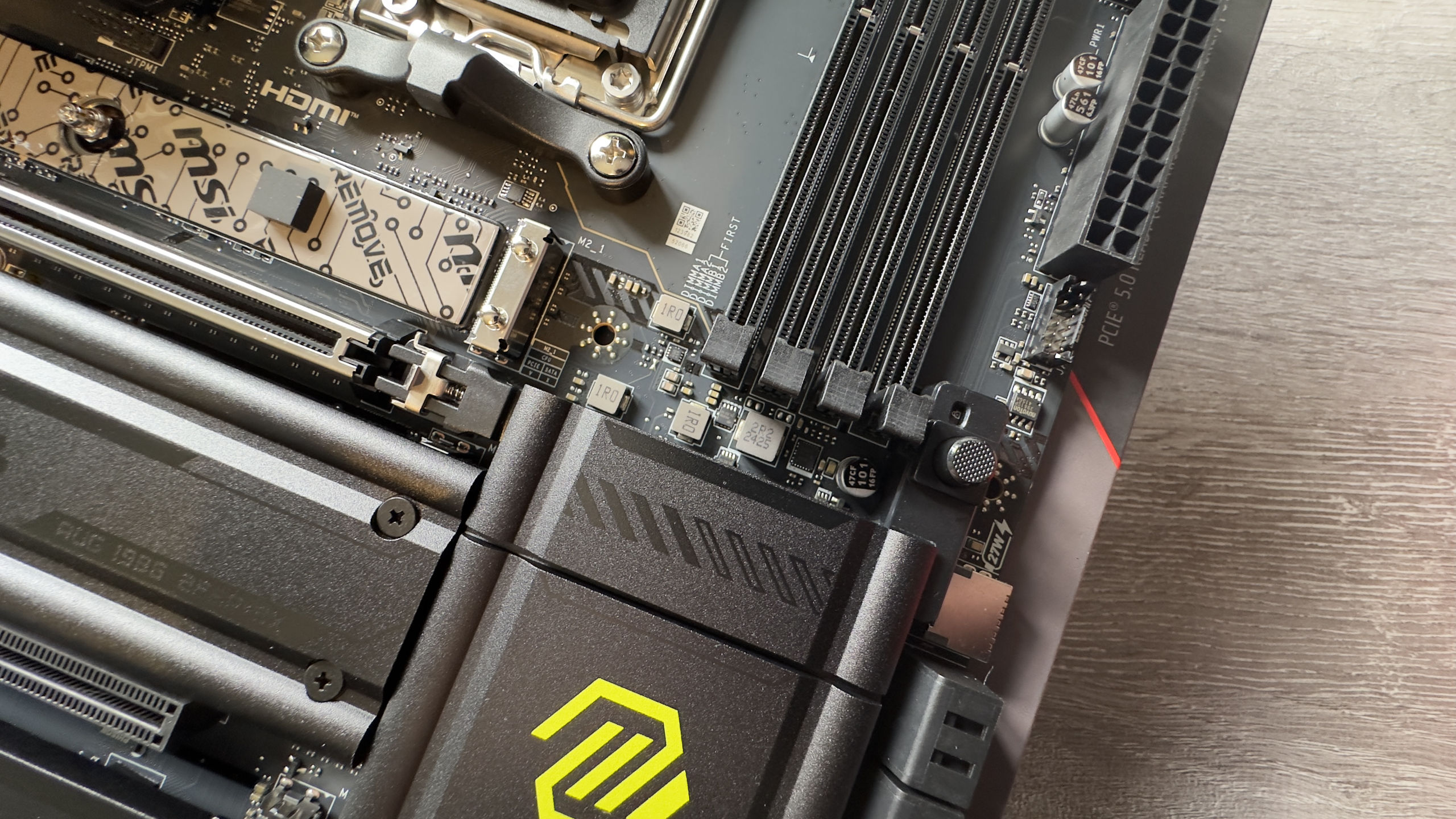
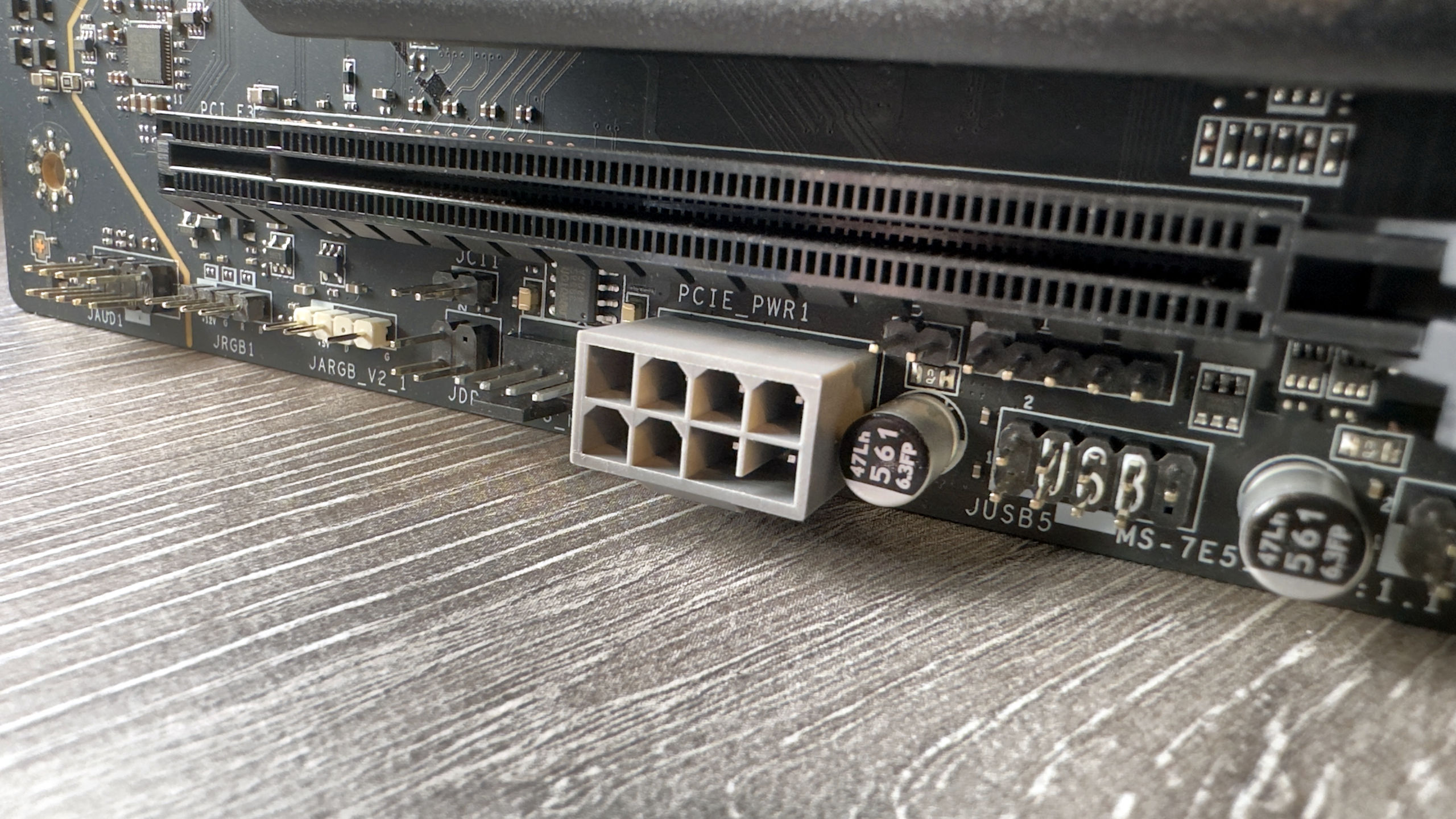
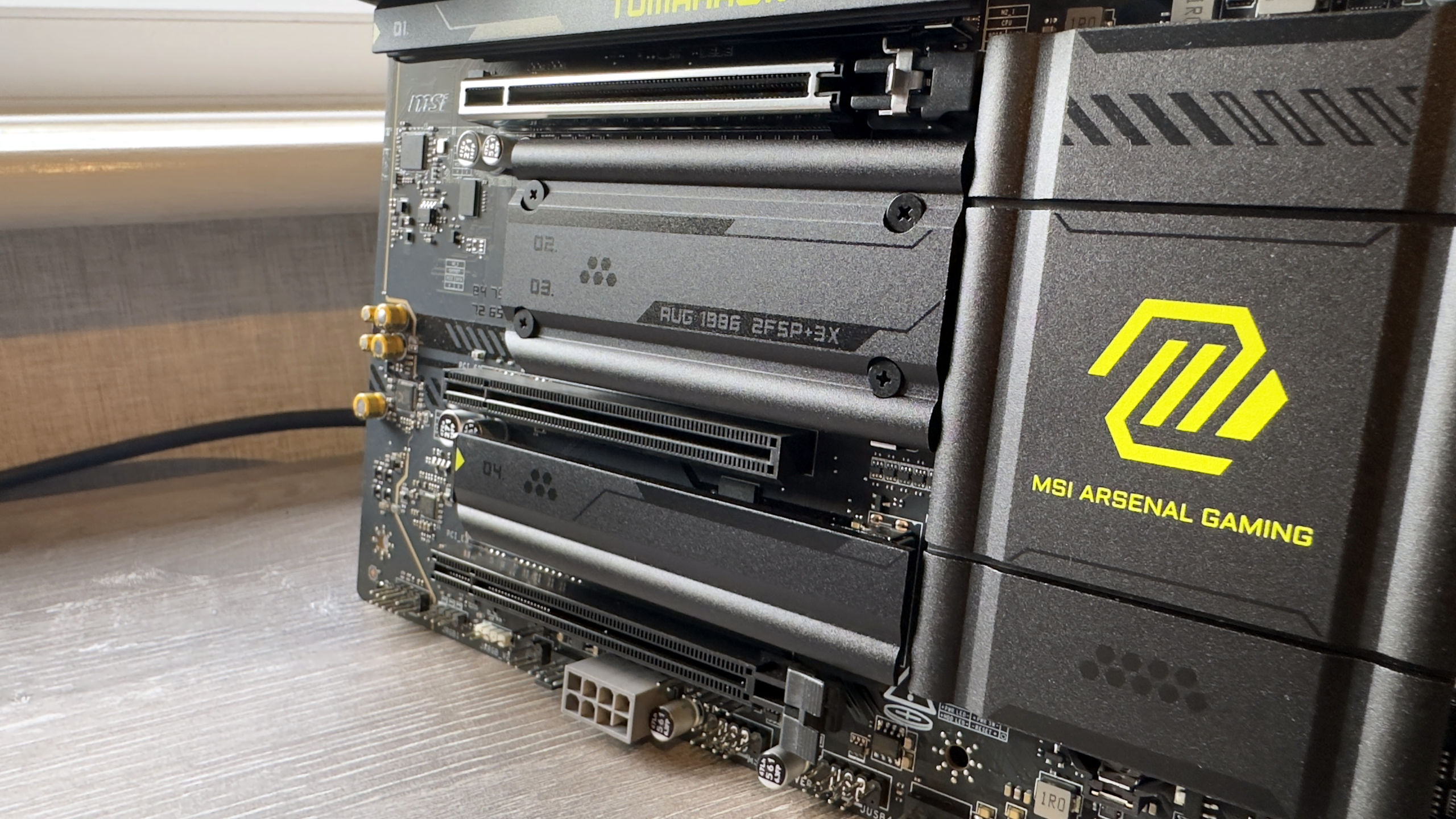
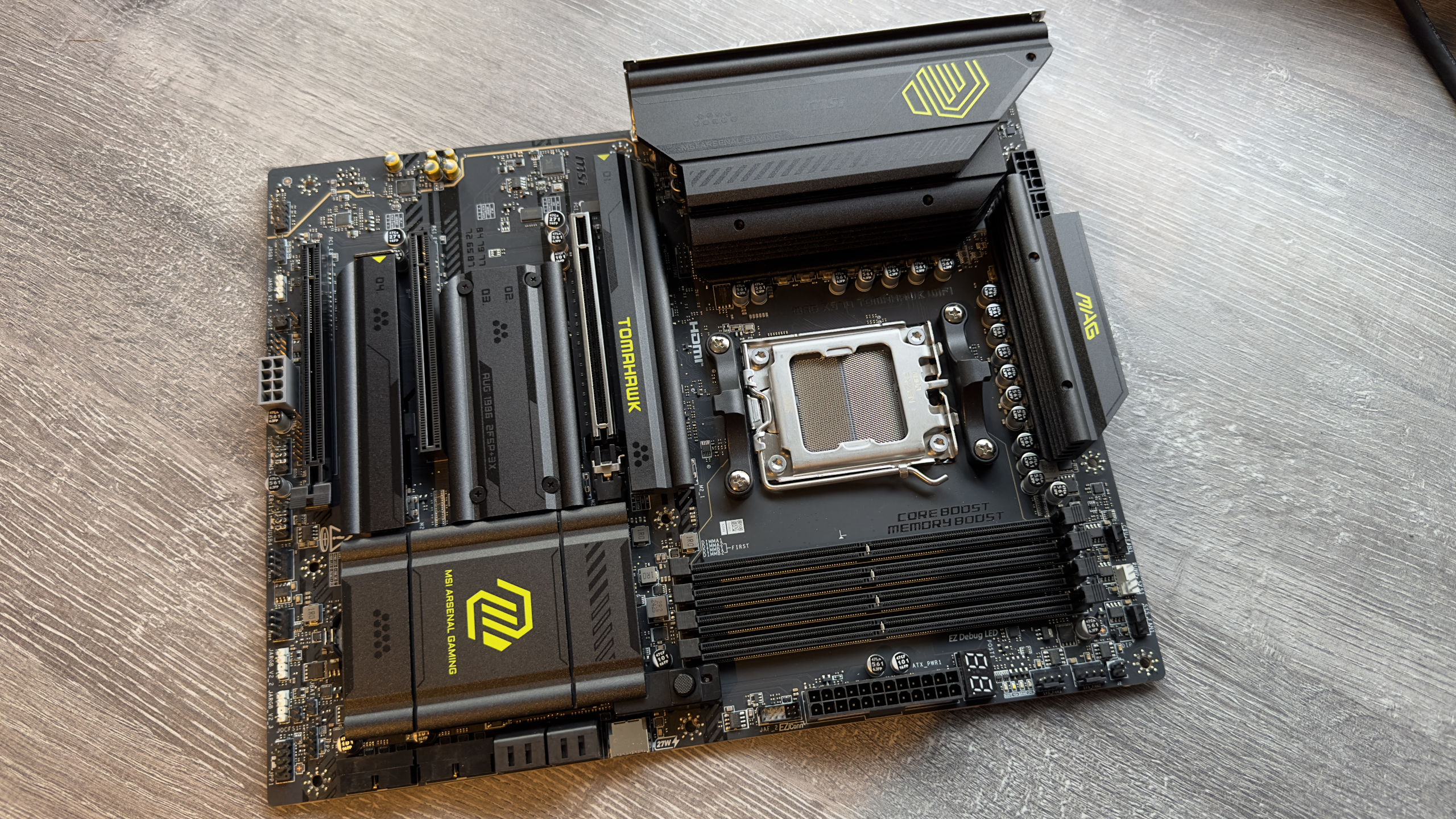
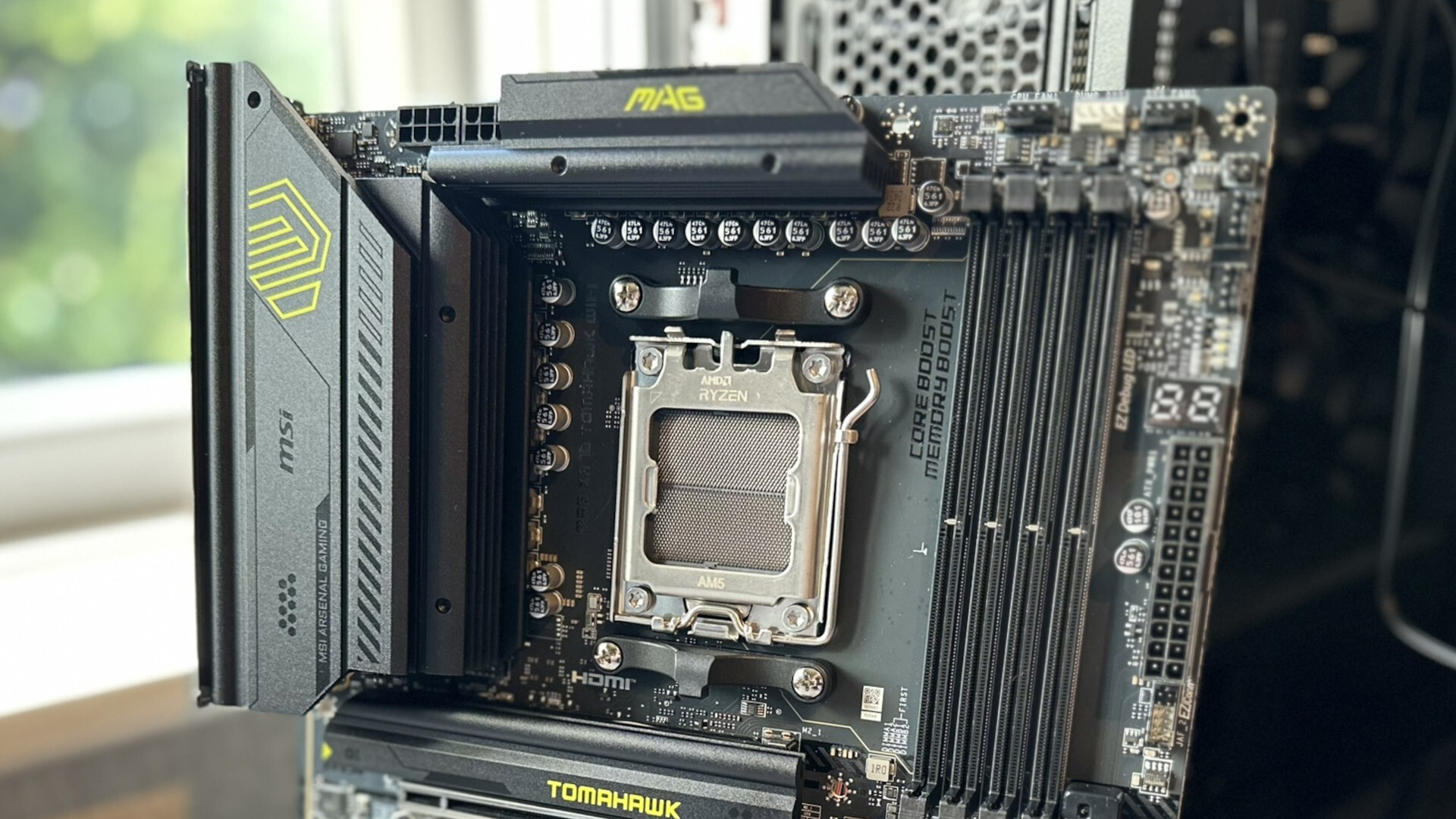
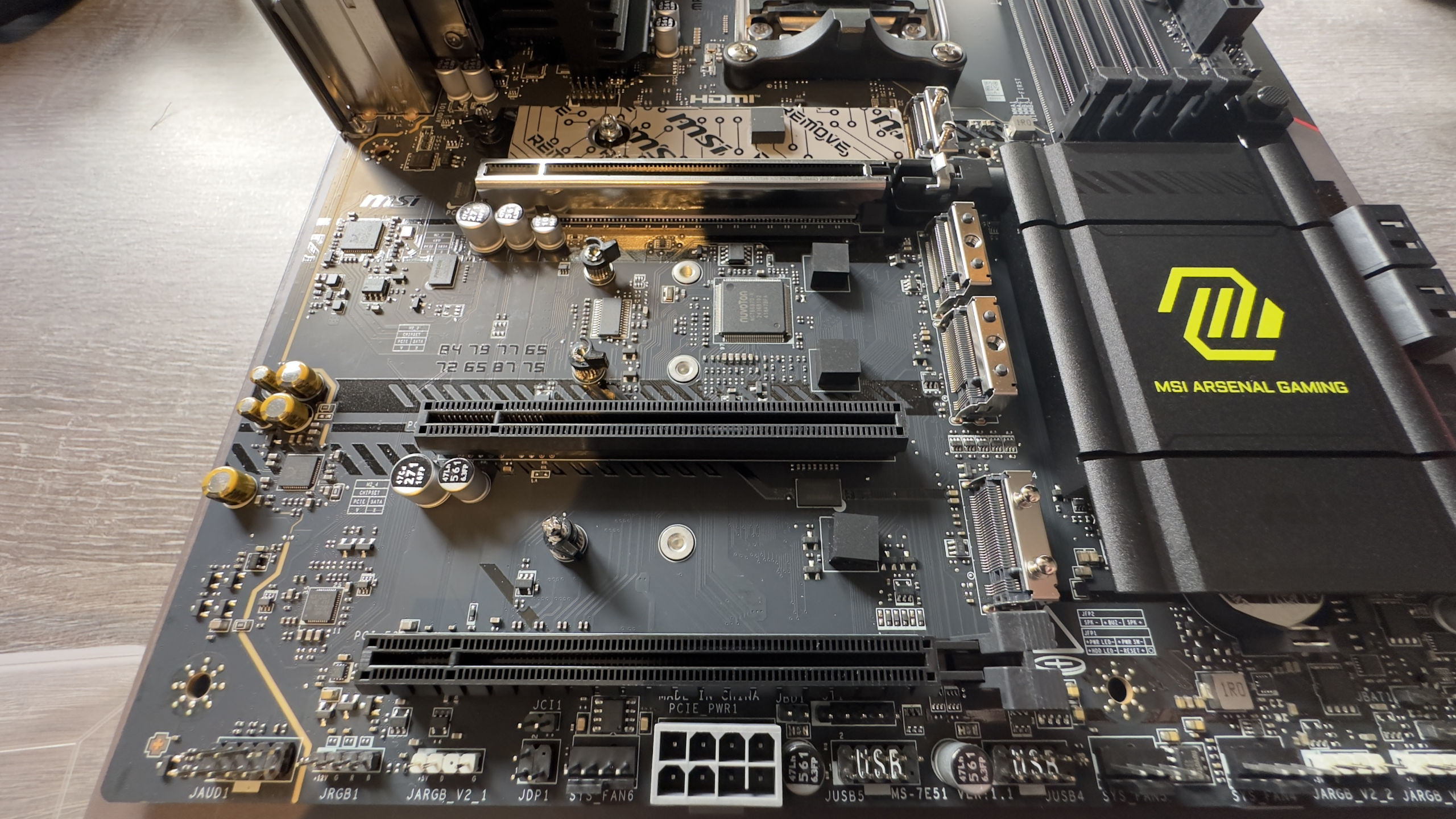
Specifications
Reasons to buy
Reasons to avoid
✅ You want more USB ports than you can shake a stick at: Up to 21 USB ports included here means you pretty much don't need a hub, and can happily plug in a smorgasbord of devices with no issue.
✅ You want something a bit luxurious, for less: While this board isn't exactly budget, the good news is that it feels like a top-end product, without a top-end price.
❌ You need plenty of fast PCIe slots: Concessions had to be made somewhere, and here MSI has opted for lots of USB ports, and a meagre offering of fast PCIe slots.
❌ You're looking for something budget: While this mobo is very well-priced for what it offers, you can pick up a B650E board for a lot cheaper if you don't need all that's on offer here.
If your next build revolves around one of AMD's Zen 4 or Zen 5 processors, congratulations! They're speedy chips indeed. But when it comes to the motherboard, there are plenty of options to choose from now that the AM5 platform is mature. However, if speed, port options and pricing are a concern, then let's make things simple—the MSI MAG X870 Tomahawk is chock full of USB ports, plenty fast, and available for a reasonable (although not budget) price. That makes it the best AMD X870 motherboard we've tested to date.
Normally, a board with support for up to 21 (!) USB ports would be an expensive affair, but the MAG X870 Tomahawk can be found for under the $300/£300 mark—and while that's not exactly cheap, it's very reasonable for what you get here. The rear port smorgasbord includes two USB4 Type-C, one USB 3.1 Type-C, a single USB 3.1 Type-A, three regular USB 3.0 Type-A, and four old-school USB 2.0 Type-A ports.
What a sentence. Anyway, that's a whole lot of options for peripherals, but it's not just the connectivity that makes this board our top pick in this category. Performance-wise, it's got an edge, too, as when equipped with a Ryzen 9 9900X in our testing, it handily beat the Asus ROG Crosshair X670E Hero. Not by a huge amount, mind, but motherboards can be much of a muchness for performance, and this one's got an ever-so-slight nose ahead of the competition.
It's got the odd drawback, however. Something had to give somewhere, what with all that rear connectivity, and here it's the PCIe and M.2 slots. Don't get me wrong, you still get just about everything you'd reasonably need, but some concessions have been made to the secondary and tertiary slots to fit in all that I/O.
That means the primary PCIe slot is the full PCIe 5.0 x16 shebang, but the middle slot is PCIe 3.0 x1, and the bottom is an x4 Gen 4 slot, although if you use the third M.2 slot, that'll drop to x2 Gen 4 speeds.
Complicated, isn't it? Speaking of M.2 slots, the top two are x4 Gen 5, but the second slot shares lanes with the USB4 Type-C slots on the back, meaning that if you plug anything into either of those, the second M.2 drops to x2 Gen 5. The third and fourth slots are both Gen 4, but x2 and x4, respectively.
Is this a big deal to most users? Probably not, unless you want to fill your PC with add-on cards and the absolute speediest drives in every single slot with maximum performance. Still, it's worth bearing in mind if you're planning to build a truly ultimate mega rig. You're paying performance for all that rear connectivity, although the real-world difference is debatable in each case.
Regardless, this is a multi-talented board that feels like it's built to last. We're mightily impressed with the build quality and overall toughness of this chonky board, especially the new graphics card retention mechanism that feels both easy to use and suitably robust, making swapping out graphics cards a much easier affair.
Even the BIOS is slick and user-friendly in a way you might not expect. It's a smooth experience all round, this good-looking mobo, and those of us who have put together more PCs than we can count will sigh with relief at the straightforward design choices MSI has made here.
That makes this board armed to the hilt with ports, speedy under testing, and well-designed. So if you're looking for the best X870 motherboard we've tested, you'll find it right here.
Read our full MSI MAG X870 Tomahawk WiFi review.
Best budget AMD gaming motherboard (AM5)
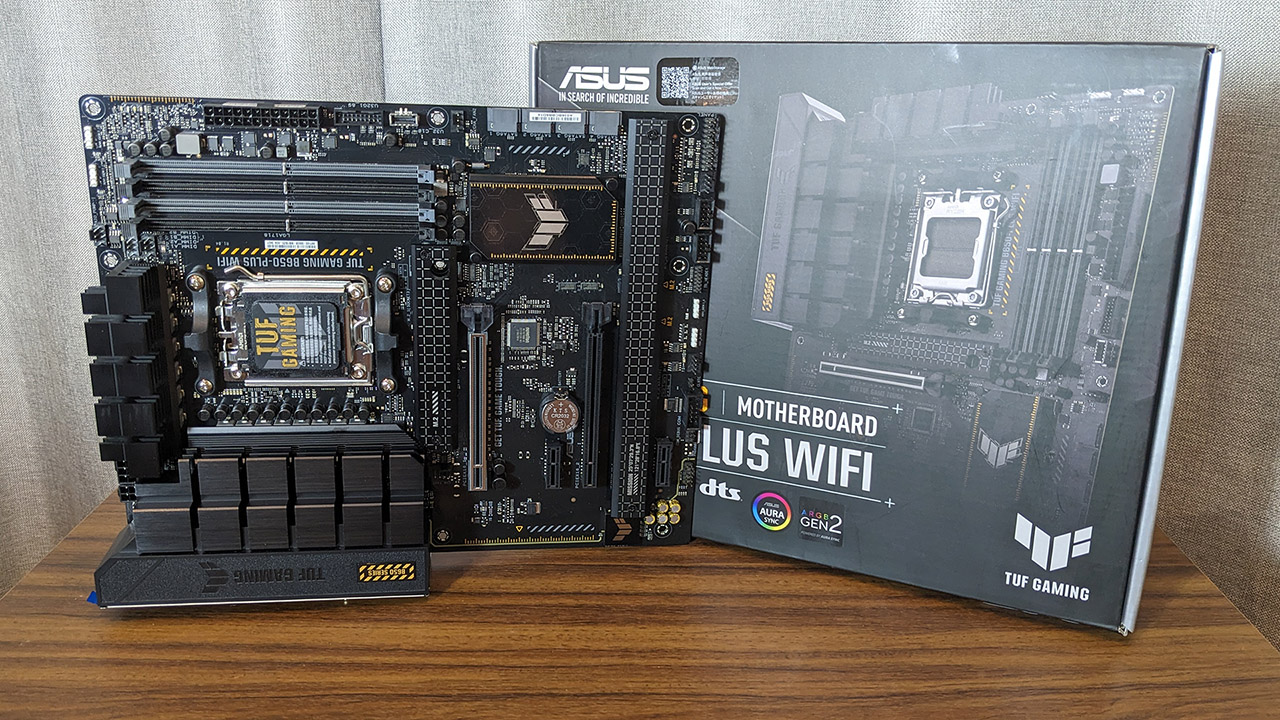
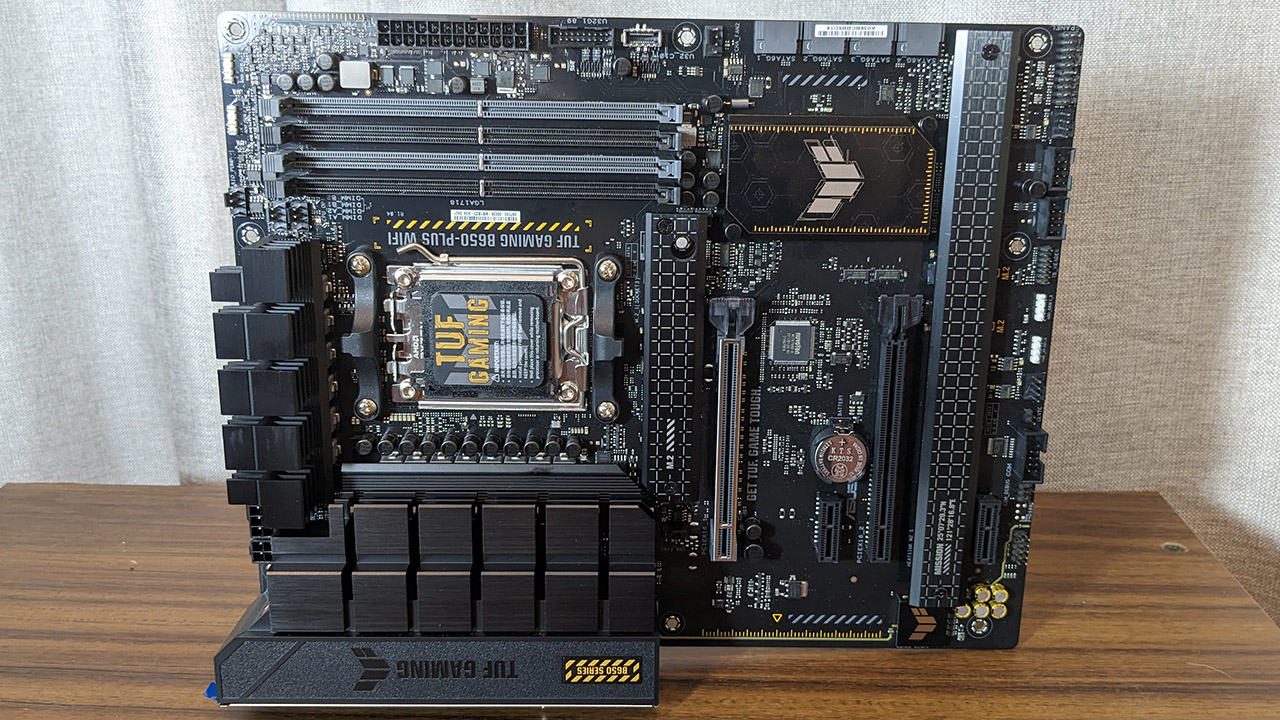

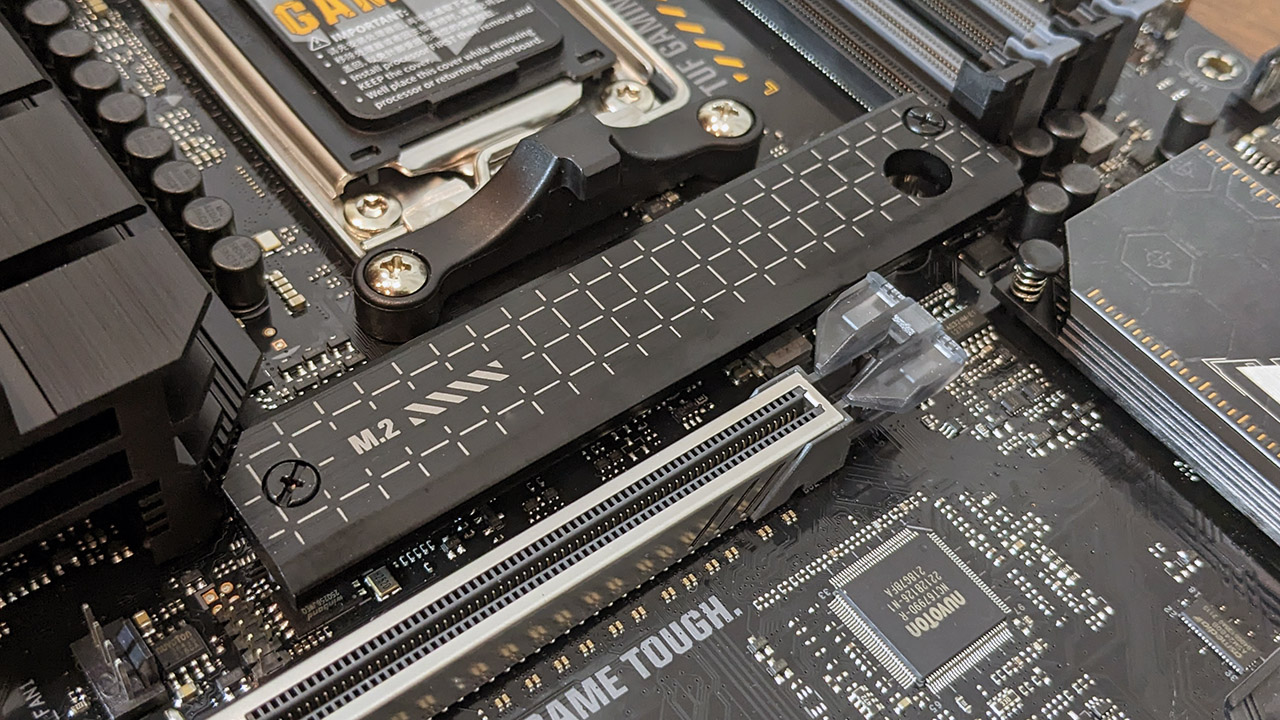
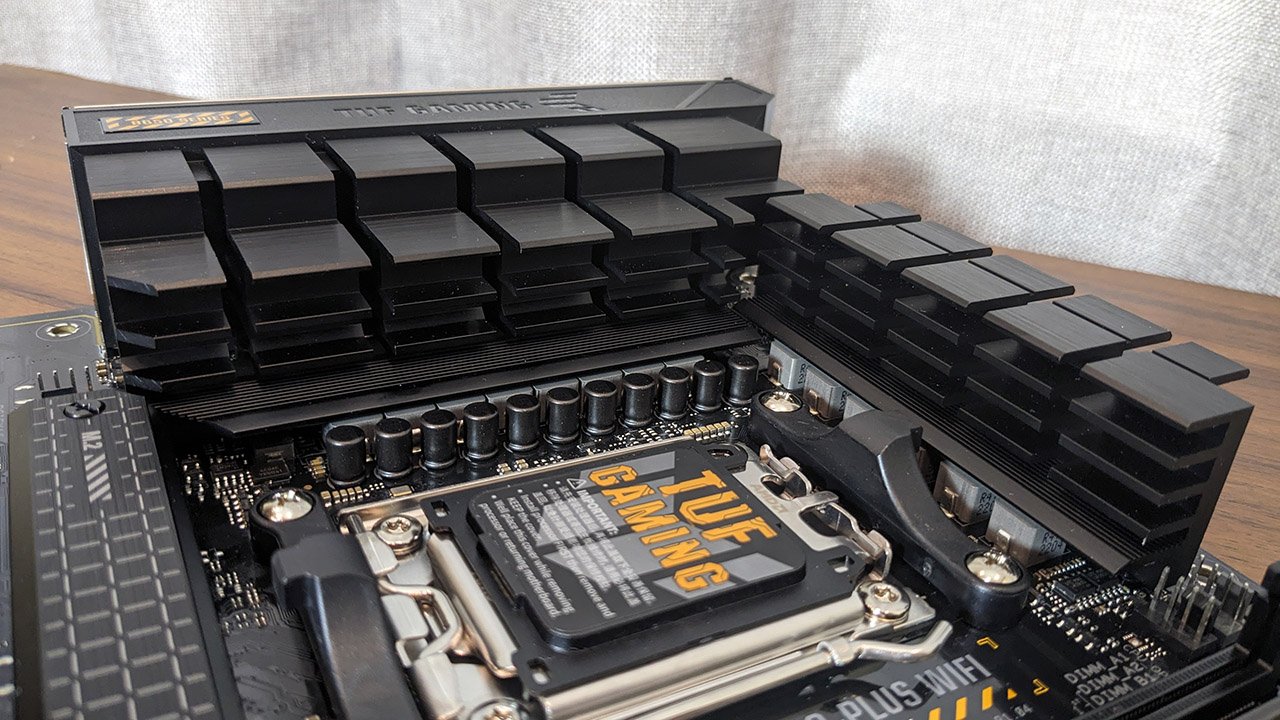
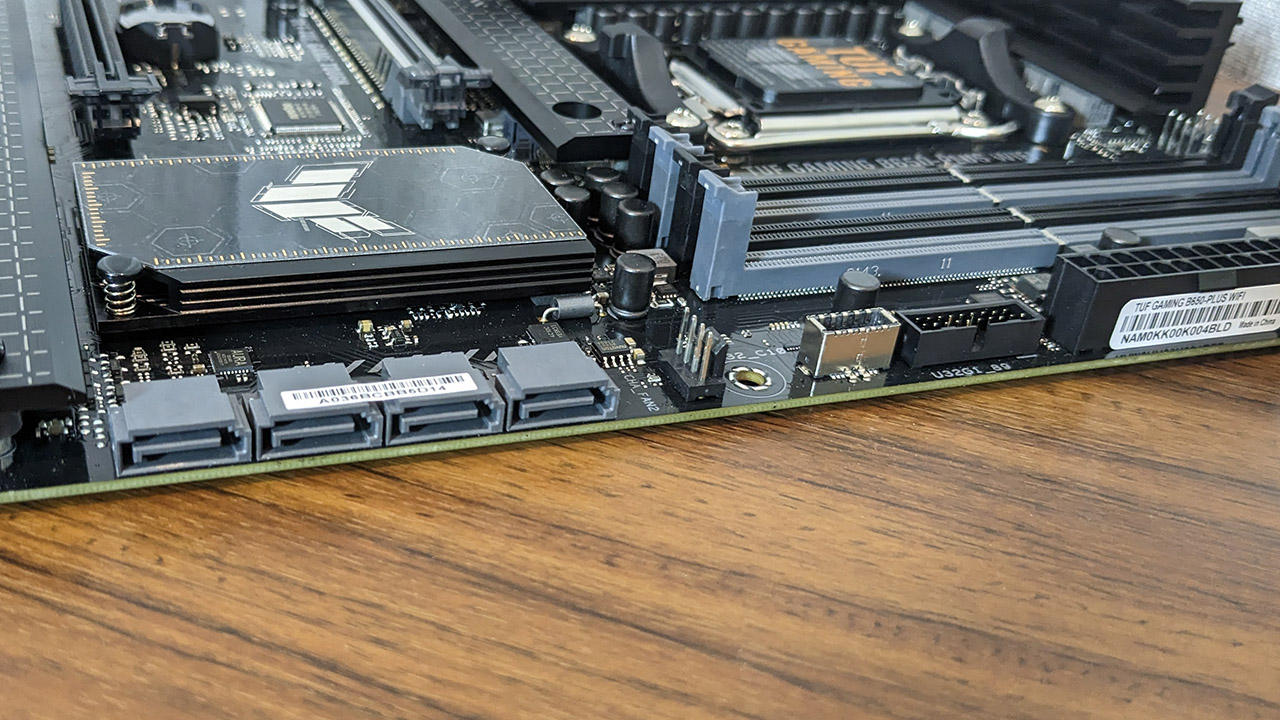
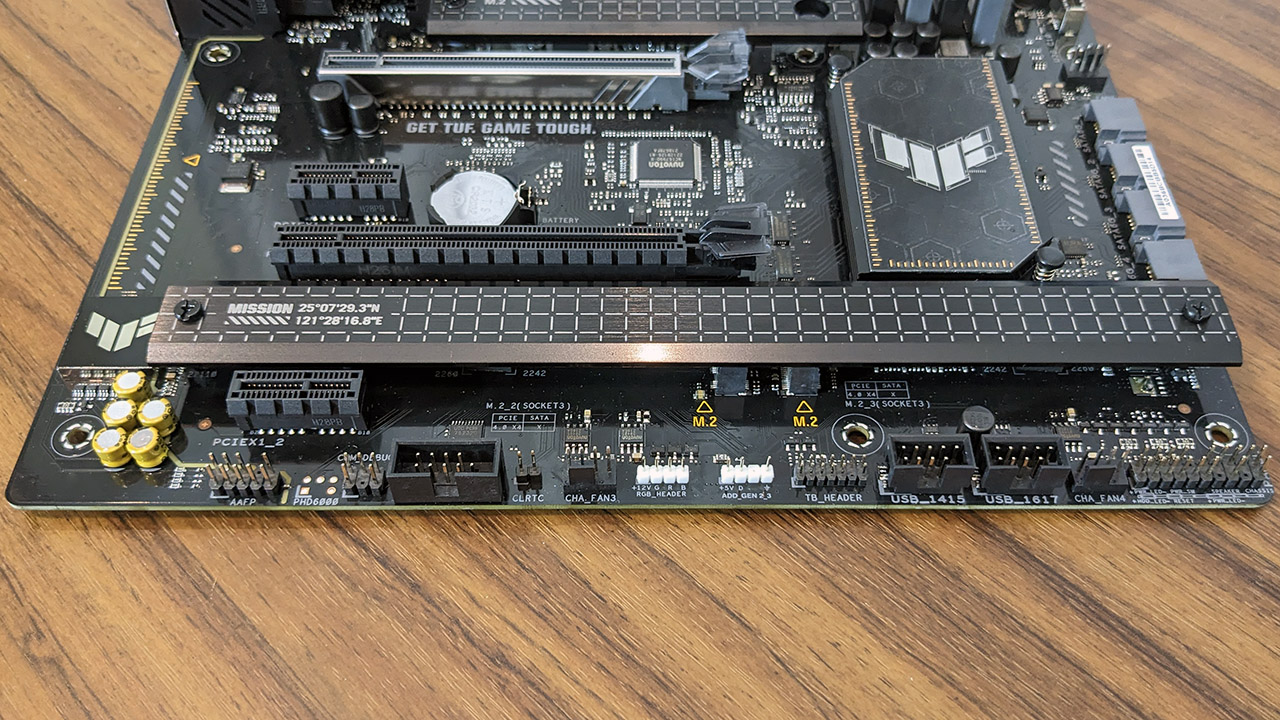
Specifications
Reasons to buy
Reasons to avoid
✅ You want an affordable B650 board that can handle future high-end CPUs: The Asus TUF Gaming B650 Plus WiFi features big and chunky heatsinks and a VRM that has no problem handling the demands of a Ryzen 9 7950X.
✅You want a stable and mature AM5 board: At the time of the launch of the AM5 platform, some boards were a little rough around the edges. Its refined BIOS will hold it in good stead for years to come.
❌You're on a tight budget: The TUF Gaming B650 Plus WiFi is a solid board, but it's a step up in price from cheaper B650 boards, especially if plan to pair it with a more affordable Zen 4 chip that won't tax the VRM and cooling of the board.
AMD's B650 might be its mid-range chipset, but that doesn't mean you should expect motherboards using it to be lacking in features. The Asus TUF Gaming B650 Plus Wi-Fi is the best B650 gaming motherboard you can buy because it's the perfect example of a motherboard that doesn't lack features.
Unlike some other mid-tier boards, the TUF B650 Plus doesn't skimp on cooling, with big and chunky heatsinks that provide lots of surface area while allowing air to circulate freely. The primary M.2 slot—which supports up to PCIe 5.0—however, has a relatively small heatsink compared to some of the chunky M.2 ones we've seen, including those that ship with the Asrock X670E Pro RS and Gigabyte Z790 Aorus Master.
This decent cooling allows for some decent VRMs. Not spectacular, but it's all relative. Having tons of 105A stages is something for boards going for well over double the price of the TUF B650 Plus. The 12+2 phase design, with 60A stages, is more than enough to power a Ryzen 9 7950X without issue.
The motherboard comes with a good set of rear I/O ports, which are perfectly adequate for things like keyboards, mice and printers, which don’t need high-speed ports. There's a single 5 Gbps Type-C front connector and up to two Type-A and four USB 2.0 ports. Not bad, but a 10 Gbps Type-C port would have been nice. You also get 2.5G LAN and Wi-Fi 6, though notably, not 6E.
Asus's TUF Gaming B650 Plus is a solid entry into the market. It feels refined, it's got a good core feature set with excellent cooling and subtle good looks, and apart from missing out on a PCIe 5.0 slot (they're all PCIe 4.0), it's destined to have a long life ahead of it. It may not tick every feature check box, but it's got most of what you need.
Read our full Asus TUF Gaming B650 Plus WiFi review.
Best midrange AMD gaming motherboard (AM5)
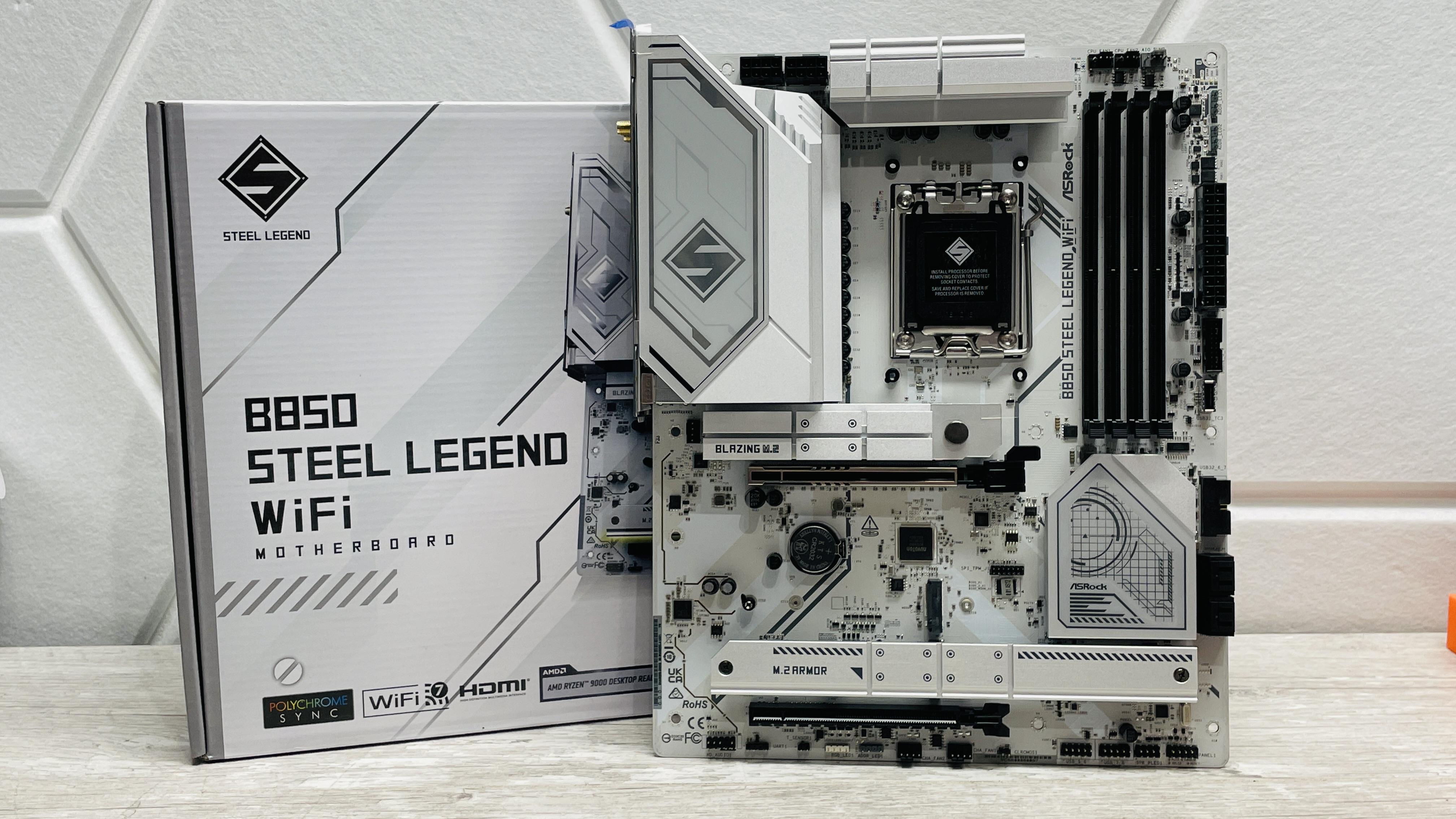
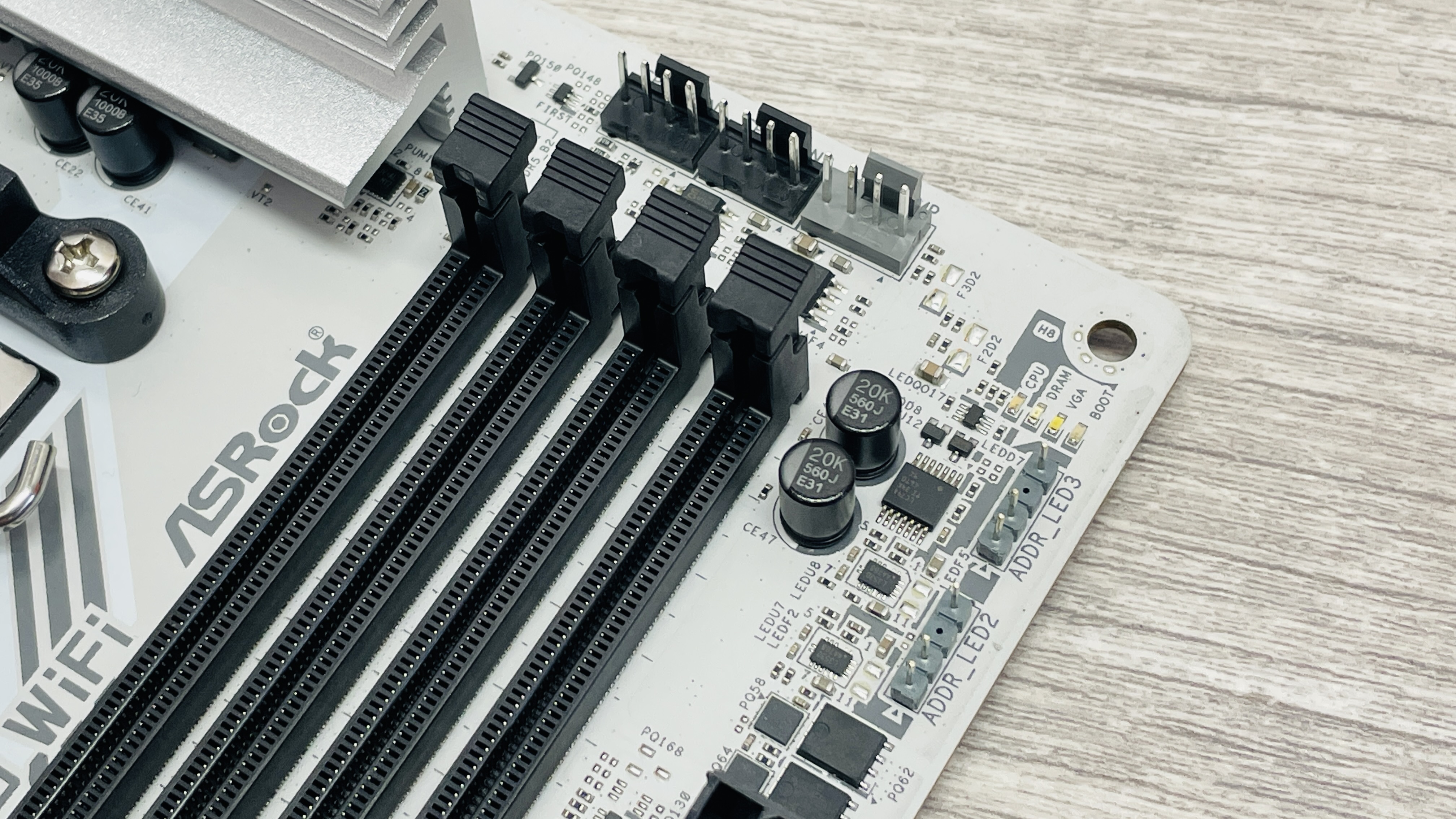
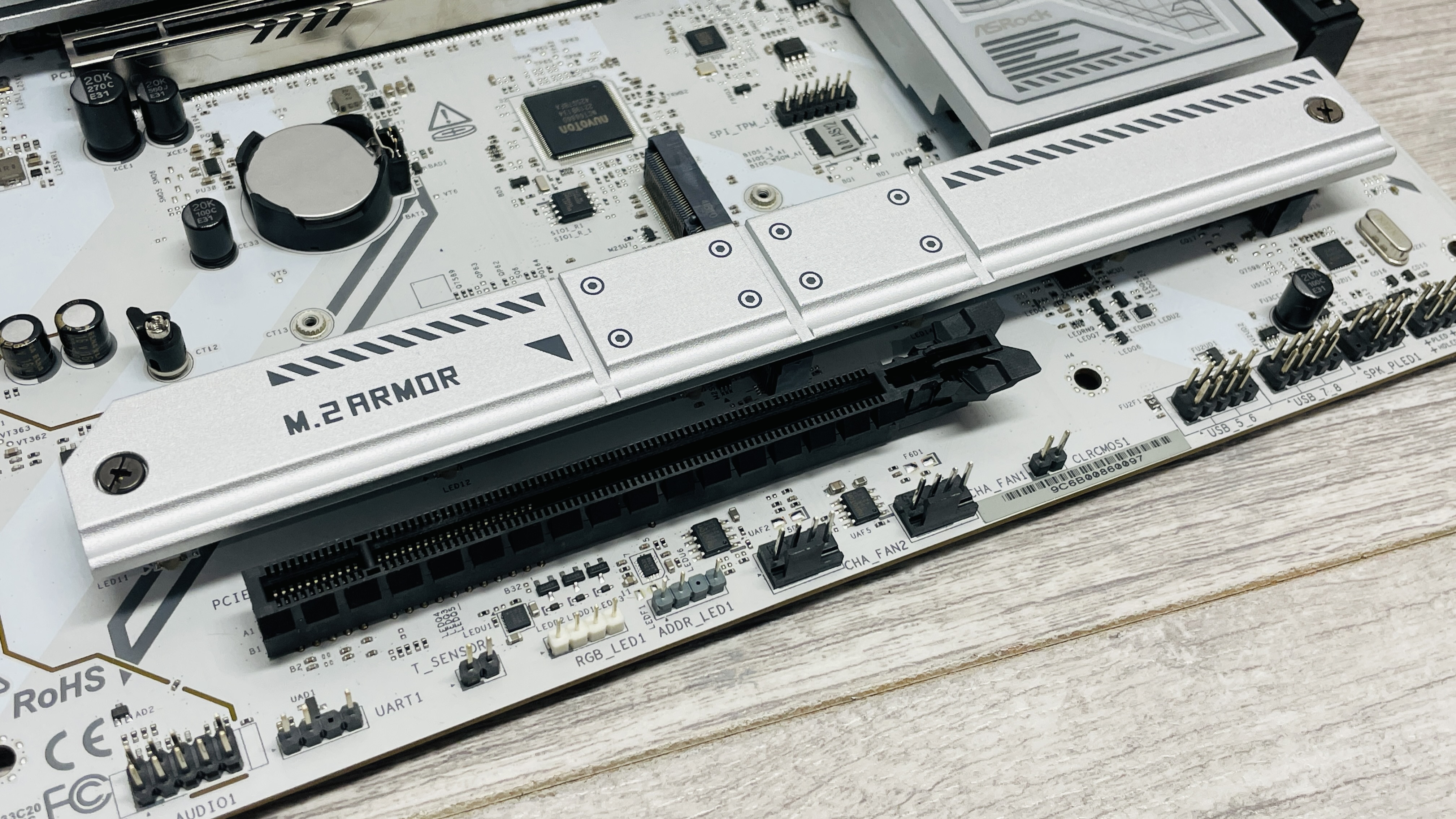

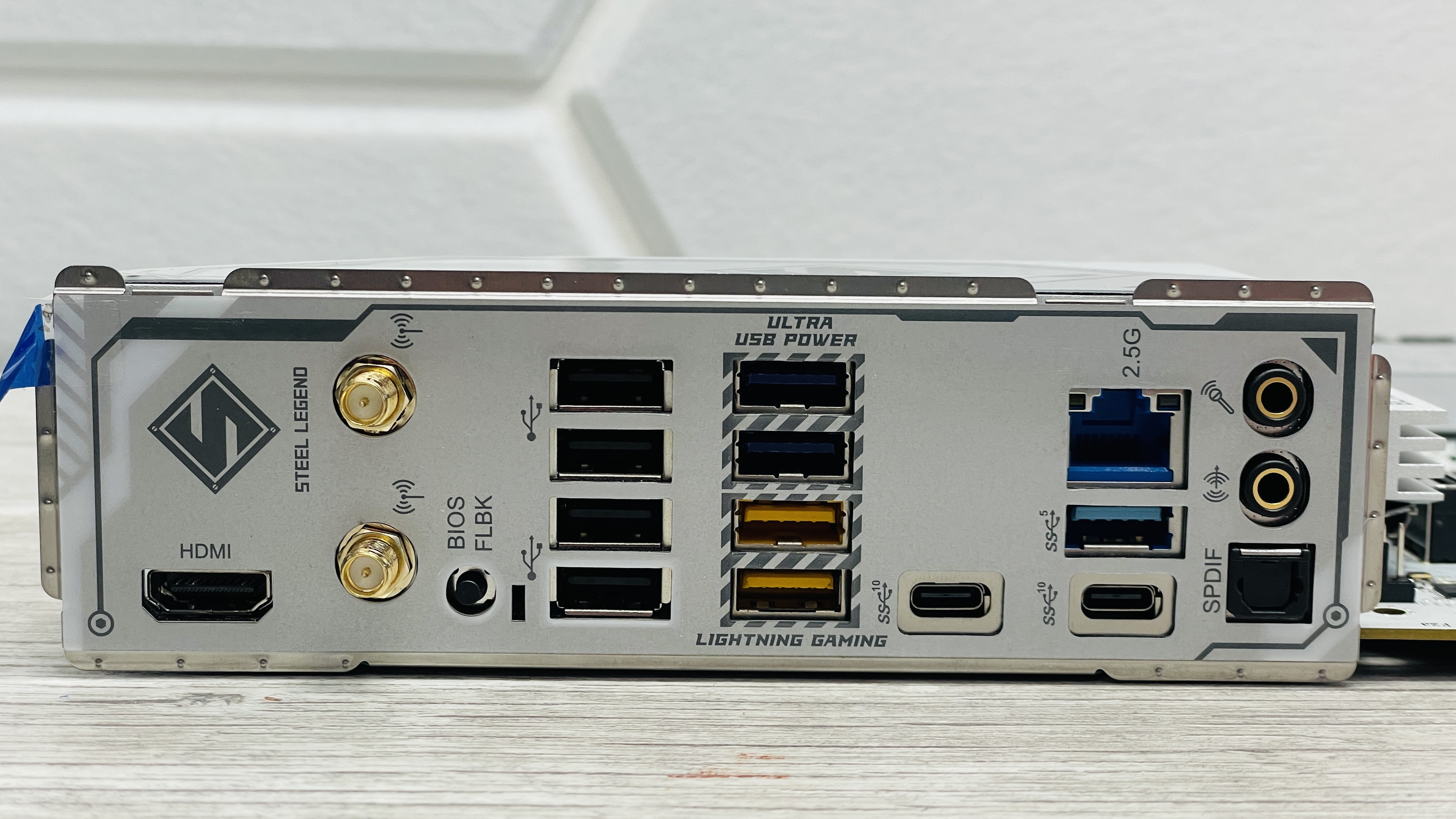
Specifications
Reasons to buy
Reasons to avoid
✅ You want a new white motherboard at a good price point: This looks lovely, fits in at an affordable price point, and has some good features like Wi-Fi 7 and tonnes of USBs.
❌ You want all the premium trimmings: At this price point, something's gotta give and it's missing power, reset, and clear CMOS buttons, and has a pretty basic UEFI. It also lacks USB4.
ASRock's new motherboard is the best midrange AM5 motherboard around, thanks to a great price point, lots of USB ports and some neat modern features like Wi-Fi 7 and PCIe 5.0 support. If you're looking to build that all-white PC with a Ryzen 7000 or 9000 CPU that you've been dreaming of, this motherboard is one of the best value ways of doing so.
In exchange for that lighter price point, you are removing some of the more niche features like USB4, but it still has some premium extras like Wi-Fi 7, and Realtek ALC4080 for audio. The 11 USB ports in the rear I/O panel are another sign of quality, offering a wide range of speeds and types.
You have more than enough room to plug your entire setup into this motherboard, and the single HDMI 2.1 should be more than enough for most gaming setups, too. While only half of the USB ports present are faster than 2.0 speeds, you also get two Type-C ports, which are capable of 10 Gbps.
In our gaming testing, temperatures stayed positive throughout, with no throttling, and all tests were positive, with it matching more expensive motherboards. Notably, this B850 board, thanks to Wi-Fi 7, an AMD 5 socket, and PCIe 5.0 M.2 and GPU support, is a great choice for starting a new build, as it gives room for future upgrades. It can run a PCIe 5.0 graphics card alongside a 5.0 SSD and three more PCIe 4.0 SSDs at the same time, which is great even if there aren't GPUs out there to take advantage of it just yet.
The lack of USB4 could run into some problems in the future, as it becomes more ubiquitous, and the UEFI is pretty mediocre. Its USB 3.1 Gen 2x2 20 Gbps Type-C front panel header is powerful enough to run modern external SSDs at over 2,000 MB/s, though, should you require them.
Notably, there are more premium motherboards out there and ones that are a more dazzling white than the grey-white of the Steel Legend, but the ASRock B850 Steel Legend Wi-Fi is the best B850 board right now, thanks to just how much value it gets out of that reasonable price tag.
Read our full ASRock B850 Steel Legend Wi-Fi review.
Best AMD AM4 gaming motherboard
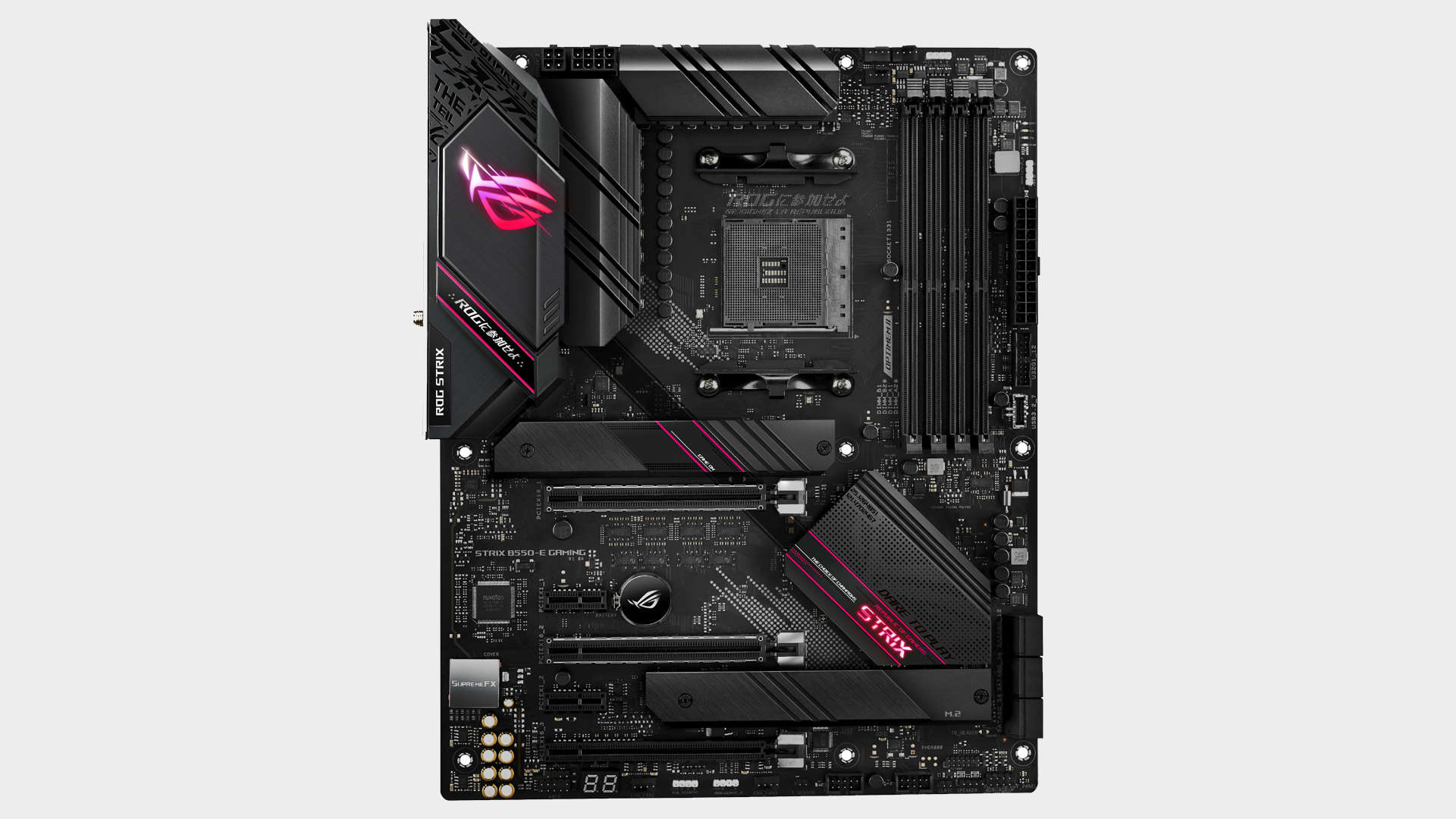
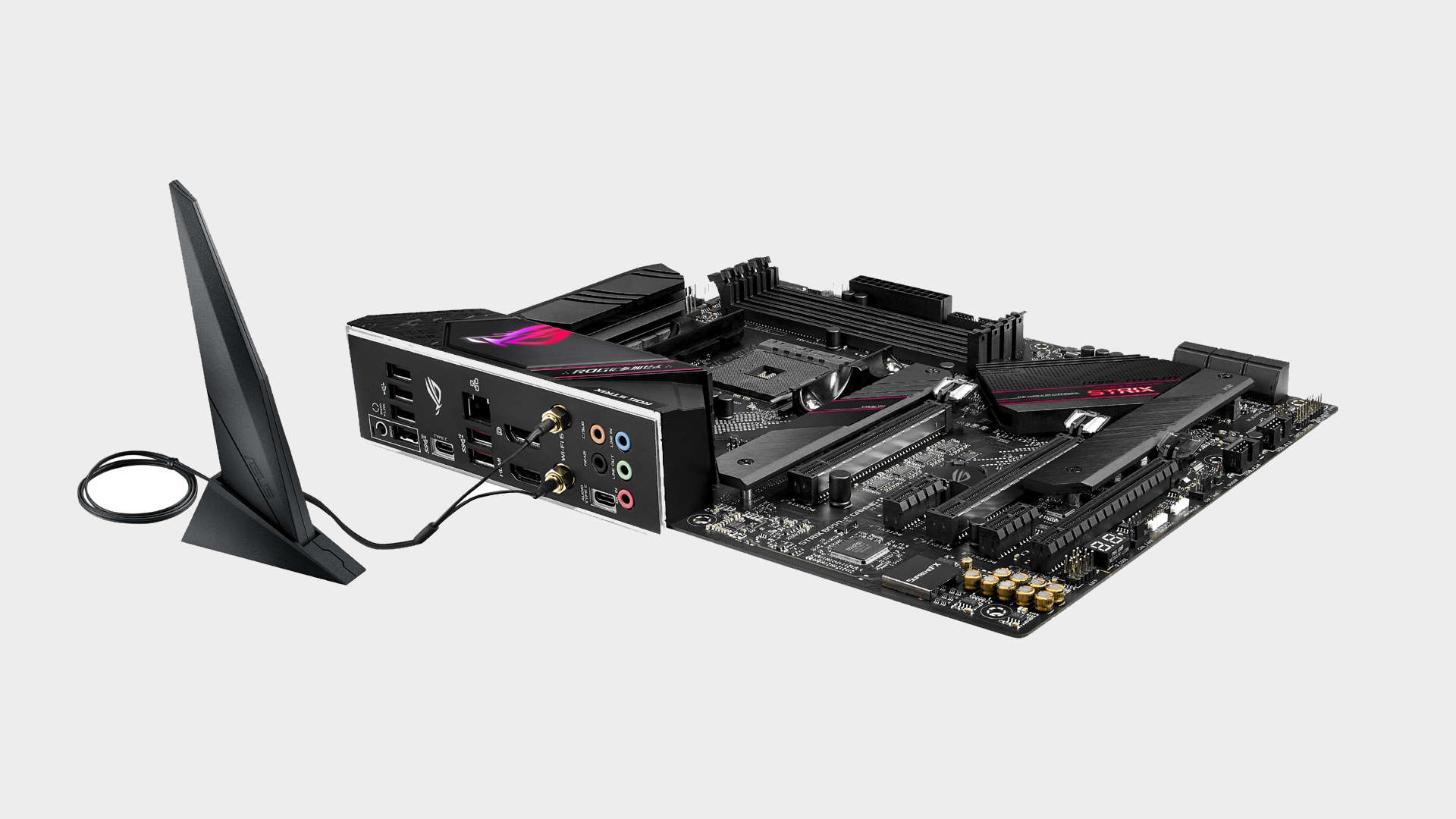
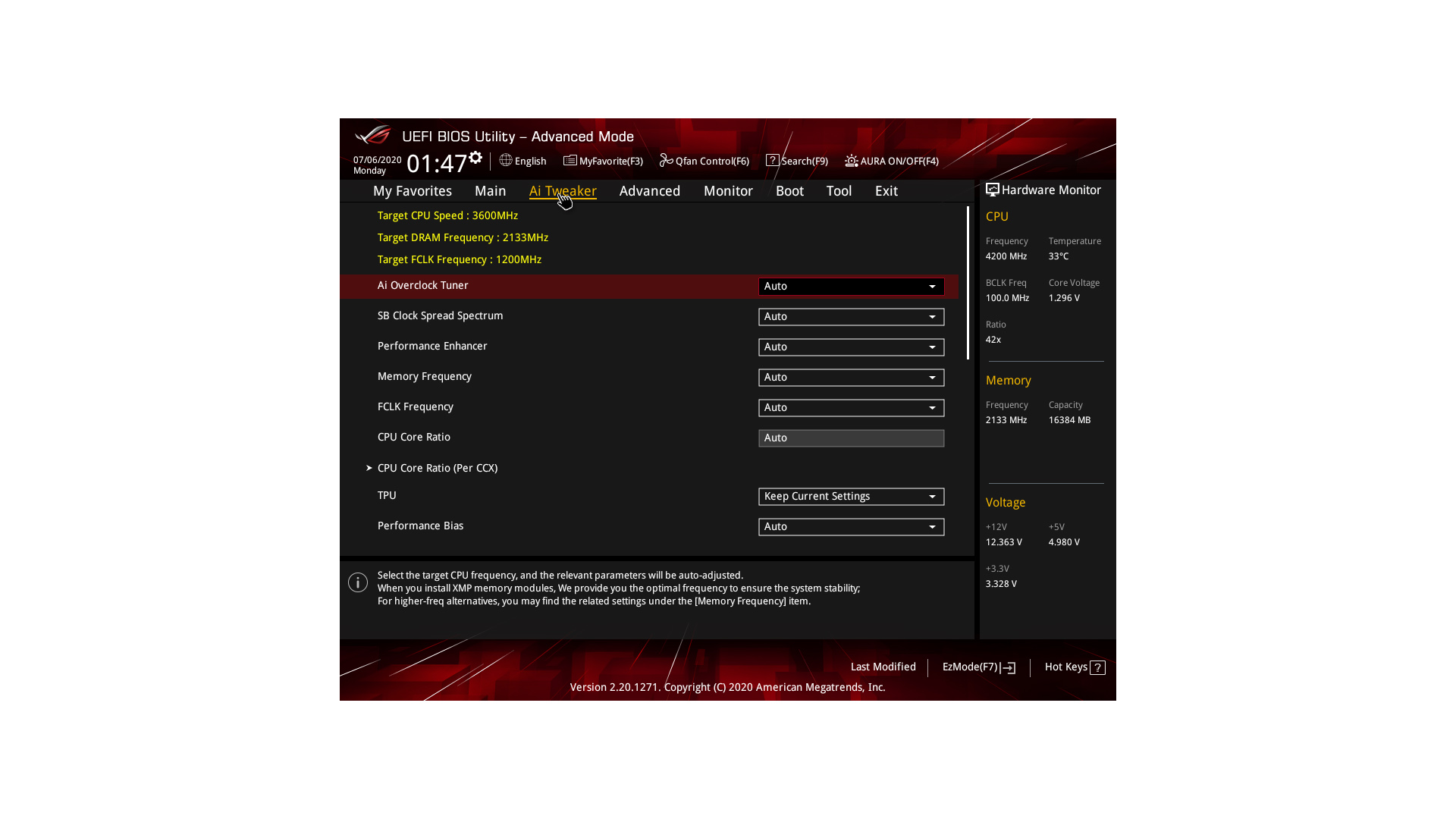
Specifications
Reasons to buy
Reasons to avoid
✅ You want a ROG board at a relatively reasonable price: Asus very rarely missteps with any of its ROG motherboards and the ROG Strix B550-E Gaming is no exception. It's a board with all the trimmings and it's perfect for pairing with a high core count or X3D Ryzen 5000-series CPU.
✅You love overclocking and tweaking: The Asus ROG Strix B550-E Gaming BIOS is packed with overclocking options. This is no B550 cheapie. Pair it with high-end accompanying components and you can clock them like you stole them.
❌You're on a budget: While the Asus ROG Strix B550-E Gaming is an excellent motherboard, it's an expensive proposition, making it hard to justify against cheaper B550 options, to say nothing about X570 boards at similar prices.
Sure, the Asus ROG Strix B550-E is the same price as plenty of X570 motherboards, but it's a premium offering, and the best AM4 motherboard you can get, thanks to all the trappings you'd expect from Asus' Republic of Gamers stables. We're talking 14+2 power stages, M.2 heatsinks, and pre-installed backplates. You also get Wi-Fi 6 wireless networking, as well as Intel 2.5G Ethernet. And RGB LEDs, of course.
What you’ll no doubt be wondering about is performance: Is it actually all that much better than a more prosaic—and cheaper—B550 alternative? At stock clocks and default board settings, the inevitable answer is no. In fact, the Asus ROG Strix B550-E Gaming is a solid 50% pricier than the likes of the MSI MAG B550M Mortar and tangibly slower in most of our benchmarks, including games.
Where the Strix looks stronger, it inevitably involves overclocking. AMD’s laissez-faire approach to clocking the twangers off pretty much any CPU that comes its way, by enabling access to super-simple core ratio tweaks, means you’d almost be mad not to give it a go.
The Strix B550-E gets Asus’ slick and familiar BIOS interface that allows access to not only the core ratio but pretty much every setting a keen overclocker could wish for. So you have the choice of bumping the core ratios up and letting the board work out the details, or getting down and dirty with voltages and timings.
Allowing the board to do the detailed brain work results in an overclock of our AMD Ryzen 3 3100 quad-core test chip of 4.2 GHz on all cores. The Ryzen 3100 is good for a 3.9 GHz boost clock as standard, so that’s a 300 MHz overclock. Which is significant, if not exactly stellar. Besides, if you are going to buy this board for a budget AM4 build, just grab a Ryzen 7 5700X3D and leave it stock—it'll be more than fast enough.
The Asus ROG Strix B550-E Gaming is the whole package, then, though it does feel like a tough recommendation when many X570 boards are the same price. It can also be difficult to find new ones in stores, so you might want to consider Asus' ROG Strix B550-F Gaming motherboard, which has very similar specifications.
Read our full Asus ROG Strix B550-E Gaming review.
Best Intel gaming motherboard (LGA1851)
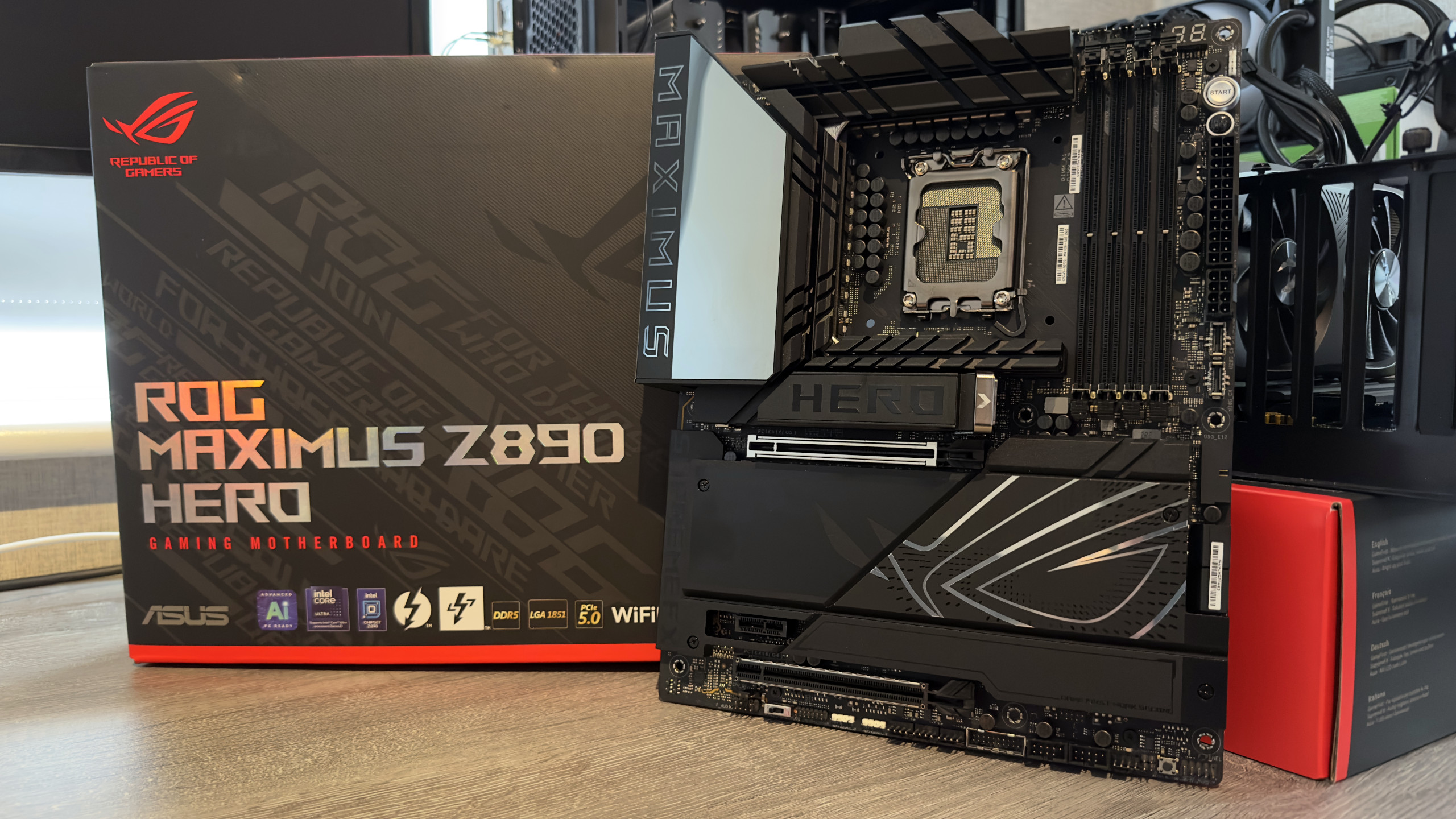
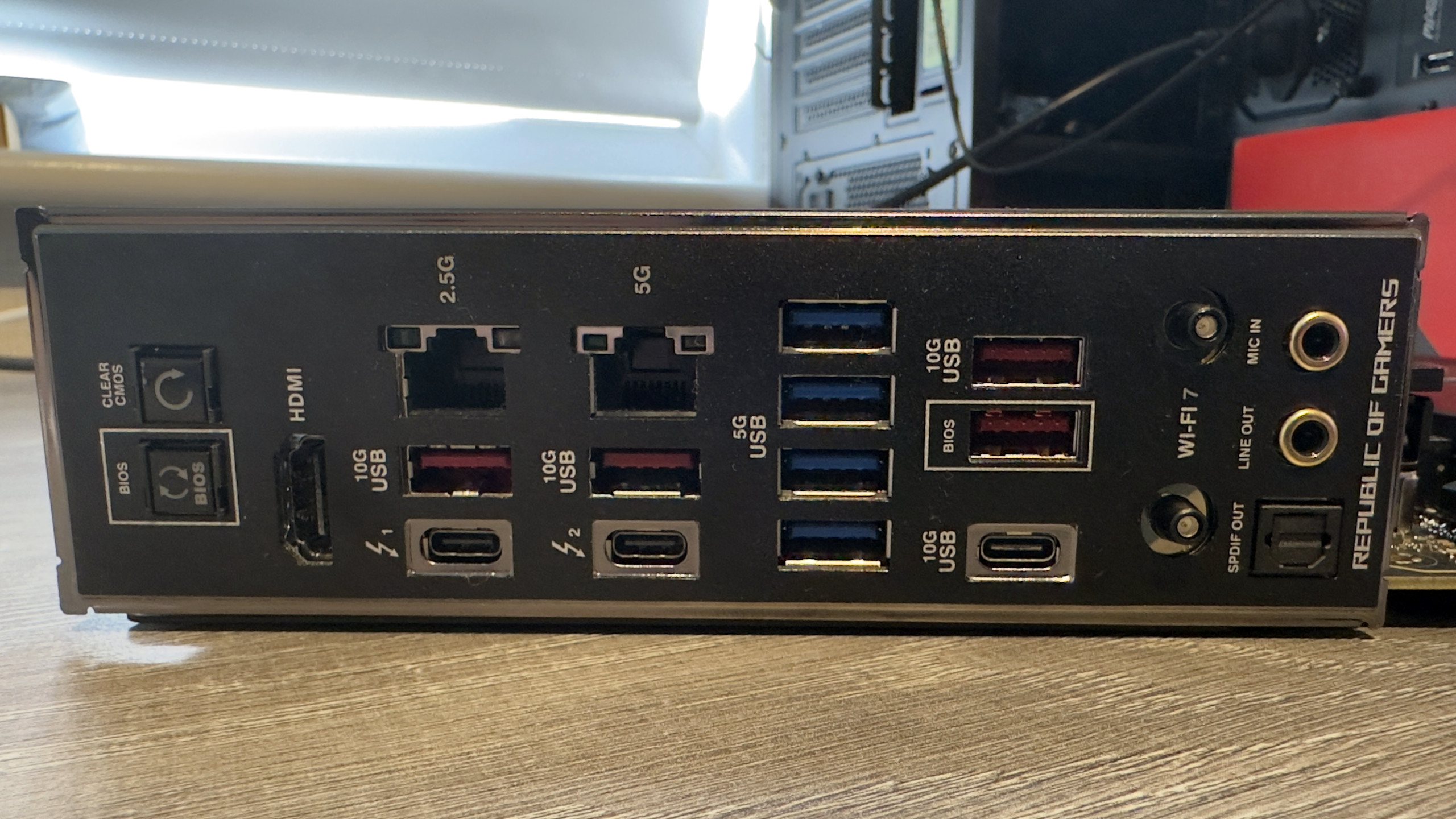
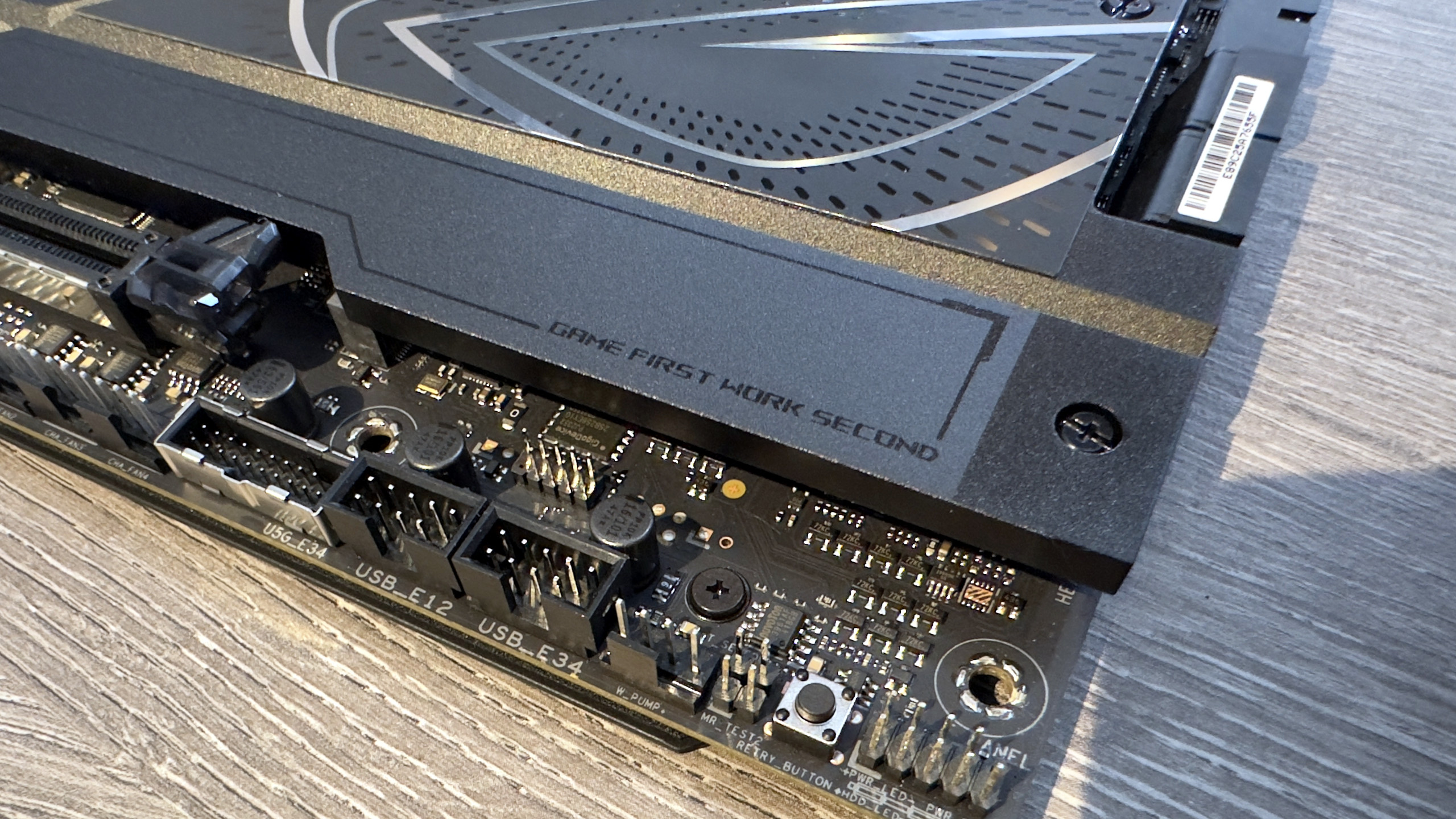
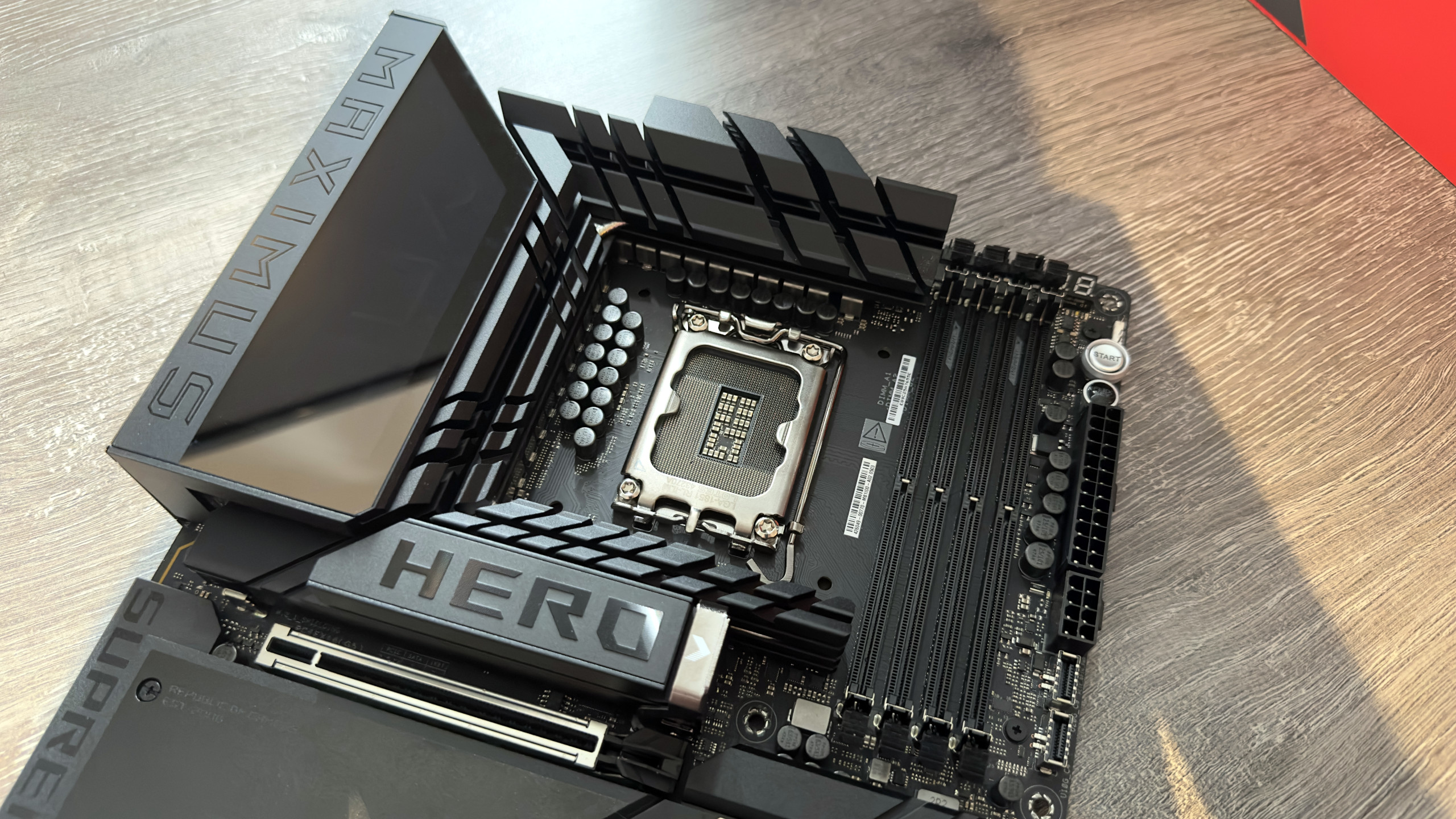
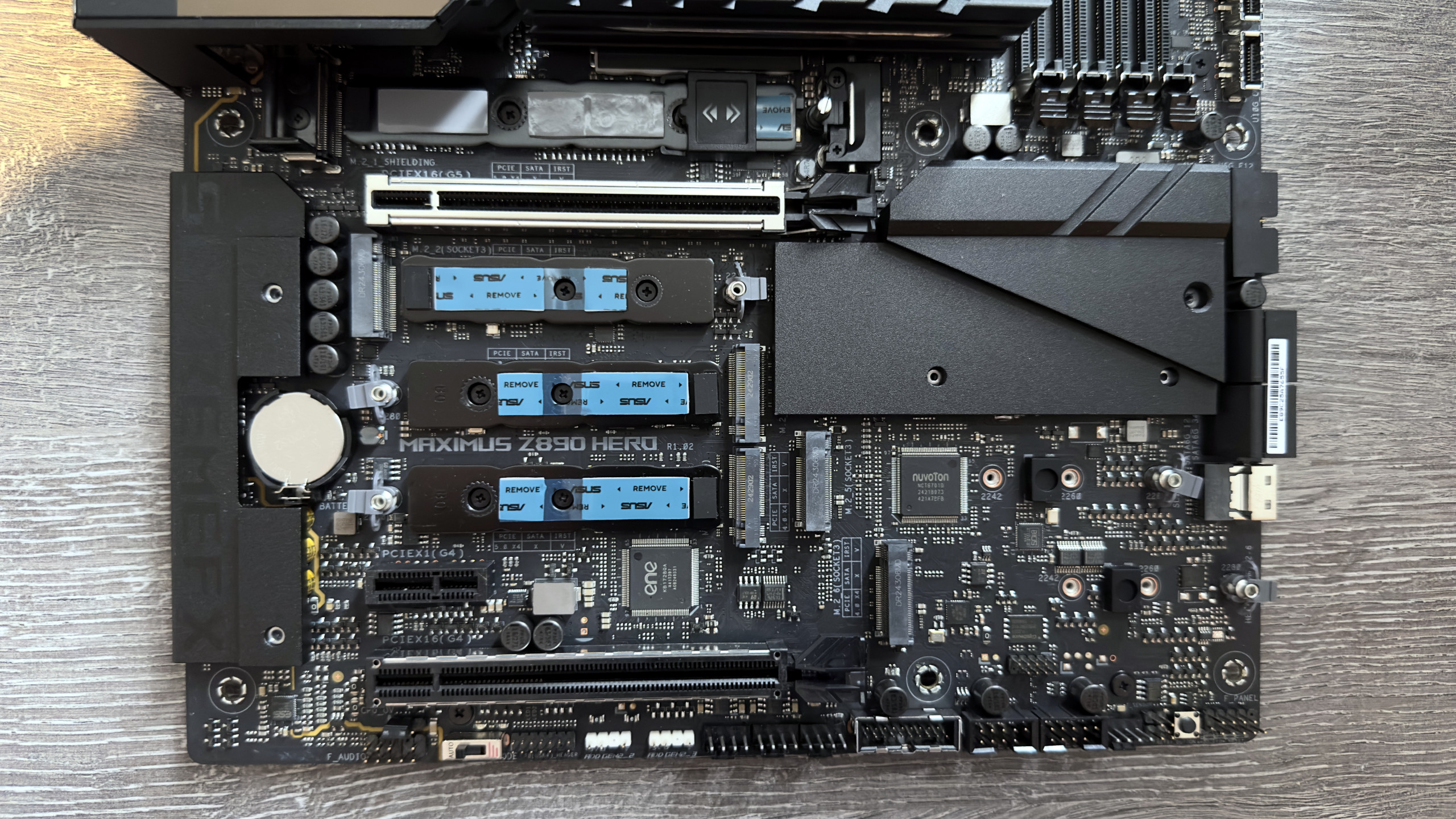
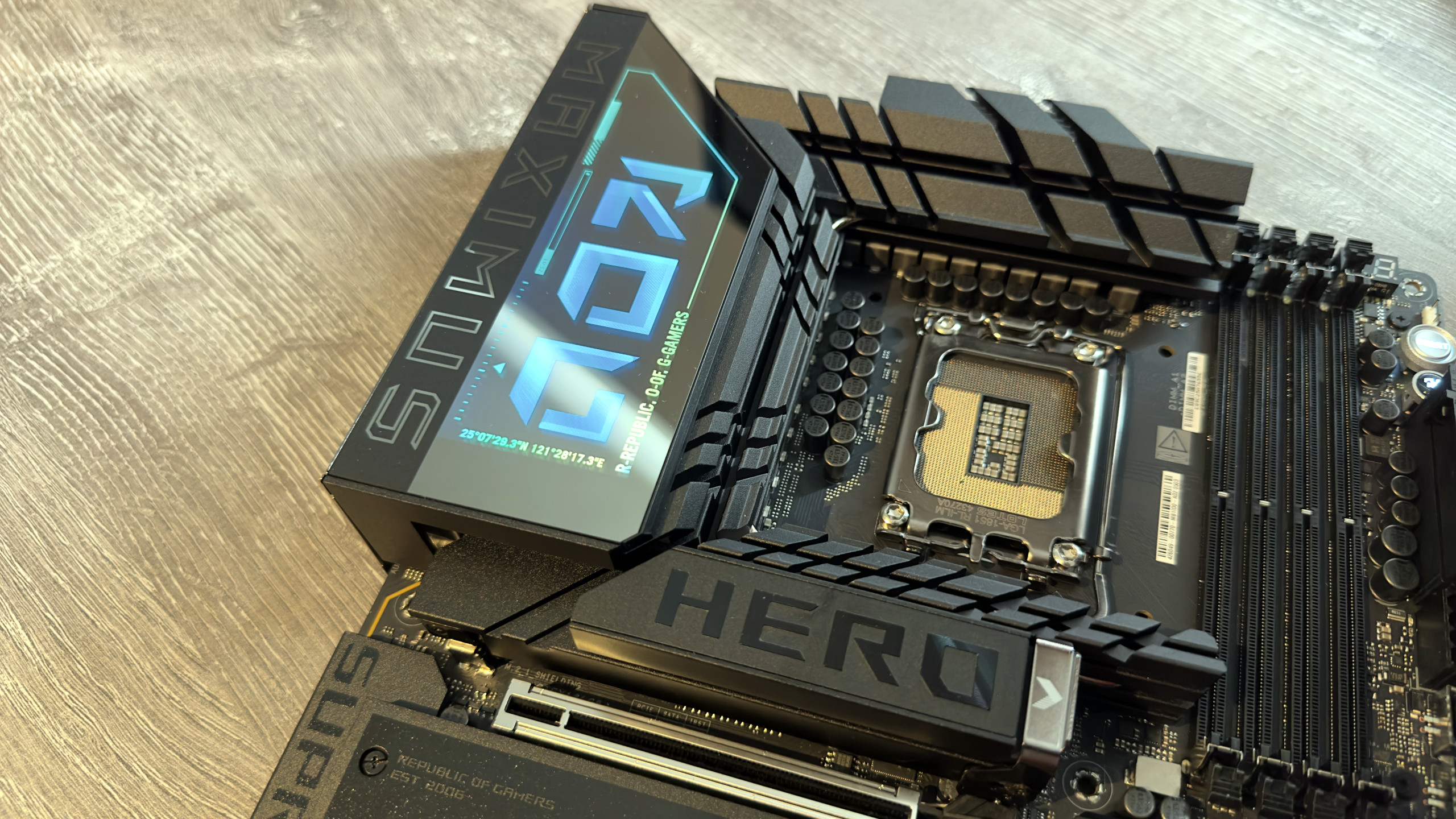
Specifications
Reasons to buy
Reasons to avoid
✅ You want all the features: This board comes with a veritable kitchen sink of ports, slots and sockets.
✅ You're buying an Arrow Lake CPU: If you've gone for Intel's latest, this is the board with all the bells and whistles for your fancy new chip.
❌ You're on a budget: It might have an absolute plethora of options, but if you don't need the vast array of sockets this board provides then you'll likely save a tasty amount with a lesser offering.
Intel's Core Ultra 200S series of CPUs hasn't exactly blown us away by their performance, but if you are considering the latest high-end Intel chips, then you're likely looking for the best Z890 motherboard to house your new CPU. That'll be the Asus ROG Maximus Z890 Hero, an astonishingly well-equipped board—for a similarly astonishing price.
Headline news here is the inclusion of six M.2 slots, which means you can deck out your new rig with a seriously huge amount of super-fast storage. More than that, you also get two Gen 5 PCIe slots, and four Gen4 ones, alongside four SATA ports and a SlimSAS connection.
That's a dizzying array of options, but don't be fooled into thinking that this board is merely a connectivity monster. Overclocking is well inside its wheelhouse, what with power being handled by 27 stages, covered in some seriously hefty heatsinks. It's overbuilt all over the place, although the Asus engineers have tried their hardest to make things as easy to use as possible, too.
There are all sorts of 'EZ DIY' features to streamline the build and part-swapping process, including M.2 Q-Release, M.2 Q-Slide, M.2 Q-Latch, a quick release PCIe slot, a Q-Antennae... basically, if you can move a component in and out of this board, Asus has probably thought of a mechanism for it that makes more sense than the standard—meaning building on it (and swapping components) is a breeze compared to some.
You can equip your new Arrow Lake build with a stonking amount of incredibly fast DDR5, too, if you so wish. Up to 192 GB is supported here, along with CUDIMM, and a max speed of DDR5-9200 (OC). USB-wise, you get 2x Thunderbolt 4 Type-C ports, a single USB 3.1 Type-C, four USB 3.1 Type-A, and four USB 3.0 Type-A bog standard jobbies.
That's specs for days and makes this a motherboard with the full kitchen sink of connectivity, ports, slots, and power potential sorted. The only real drawback here is the price, so hold your breath on this one.
The Asus ROG Maximus Z890 Hero retails for around $700/£680. Yep, I told you that figure was just as astonishing as the rest of the board. That means that in tandem with a top-end Arrow Lake chip like the Intel Core Ultra 9 285K, you'll be looking at spending well over $1,000, and that's before you spec in some speedy memory, a fast SSD, and all the other things needed for an ultra-spec modern Intel build.
Still, it takes the top slot here by virtue of the completeness of the package overall. You'll want for nothing, and that makes the Asus ROG Maximus Z890 Hero the best Intel Z890 motherboard by far.
Read our full Asus ROG Maximus Z890 Hero review.
Best budget Intel gaming motherboard (LGA1851)
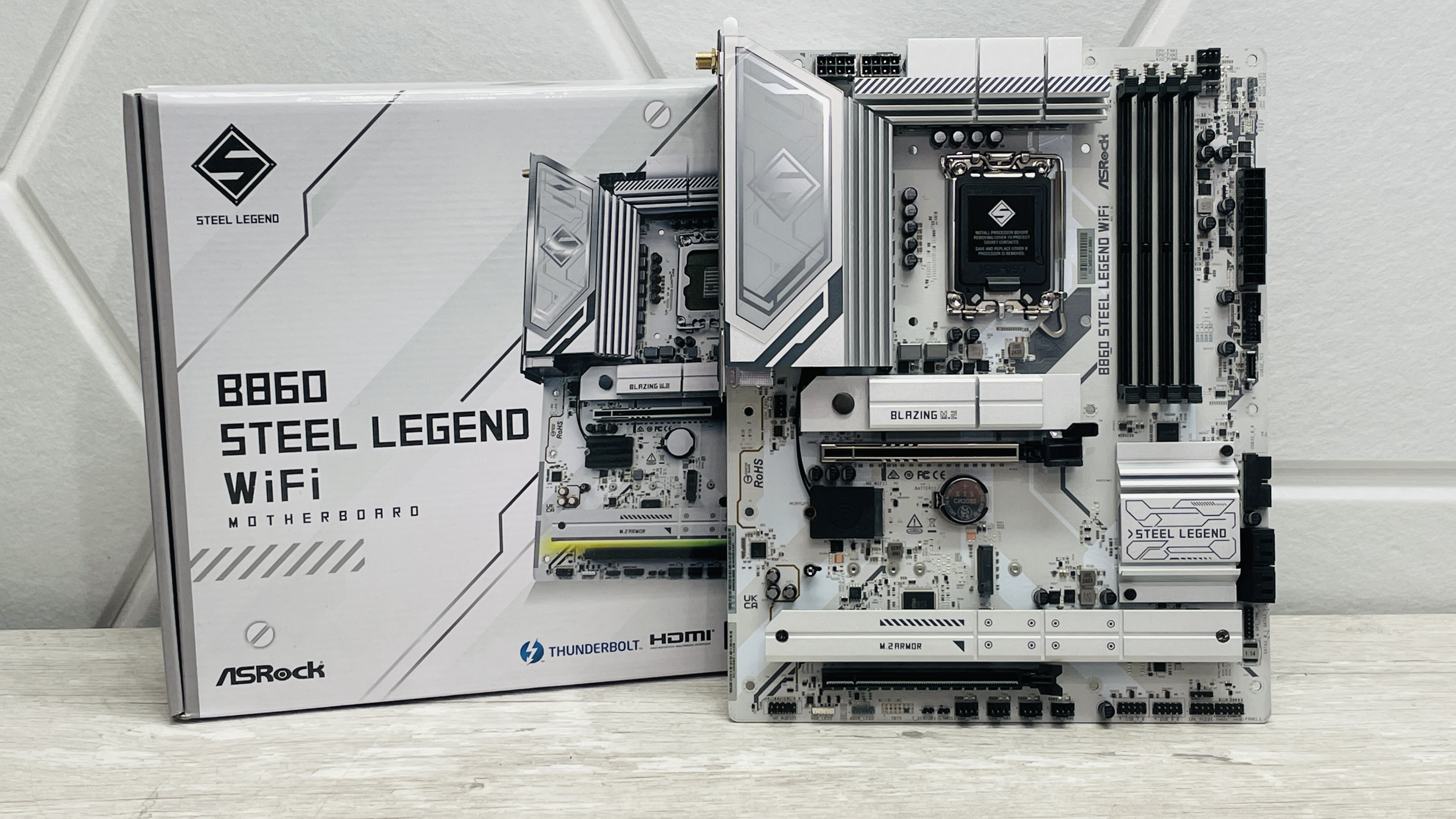
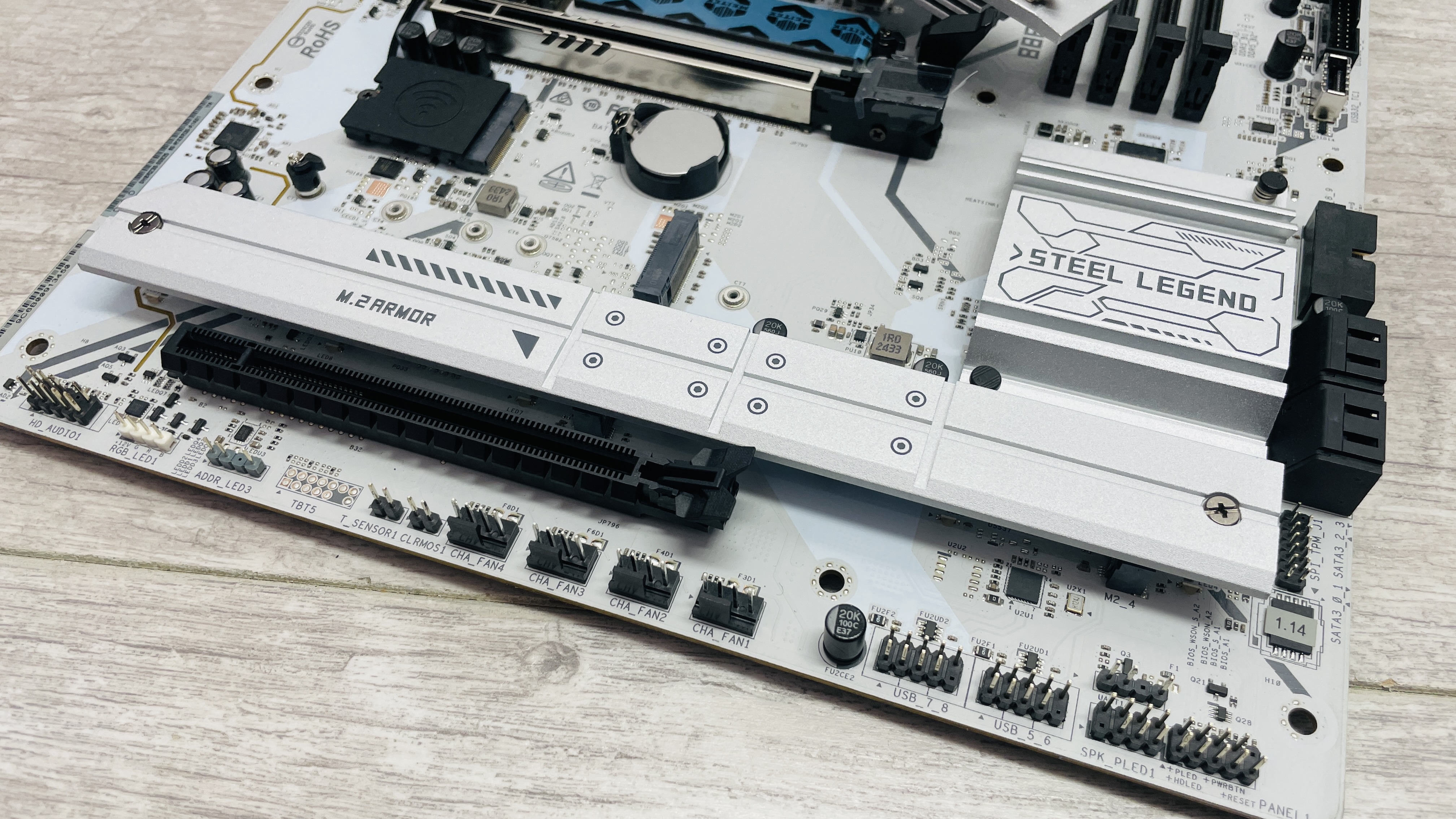
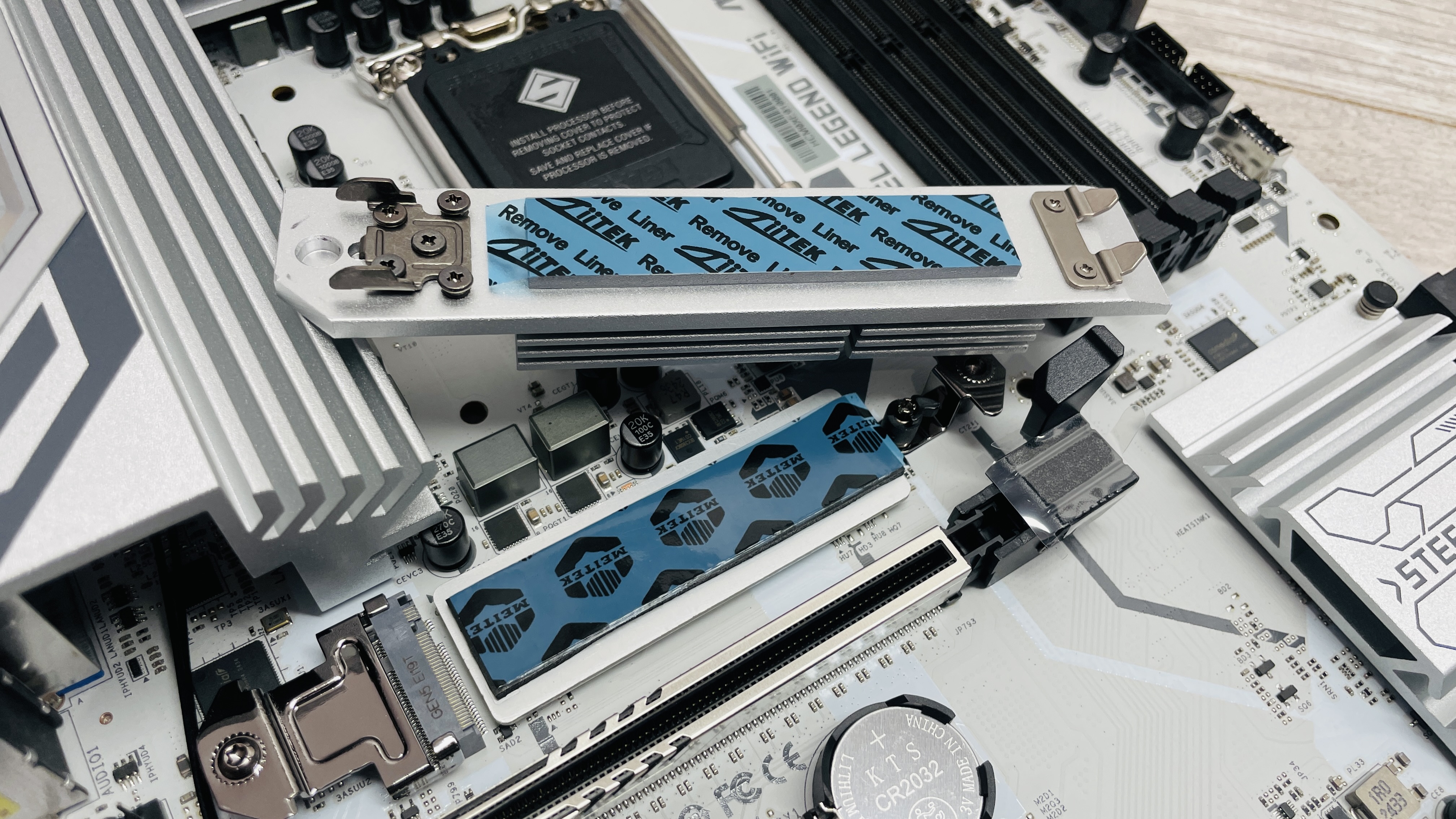
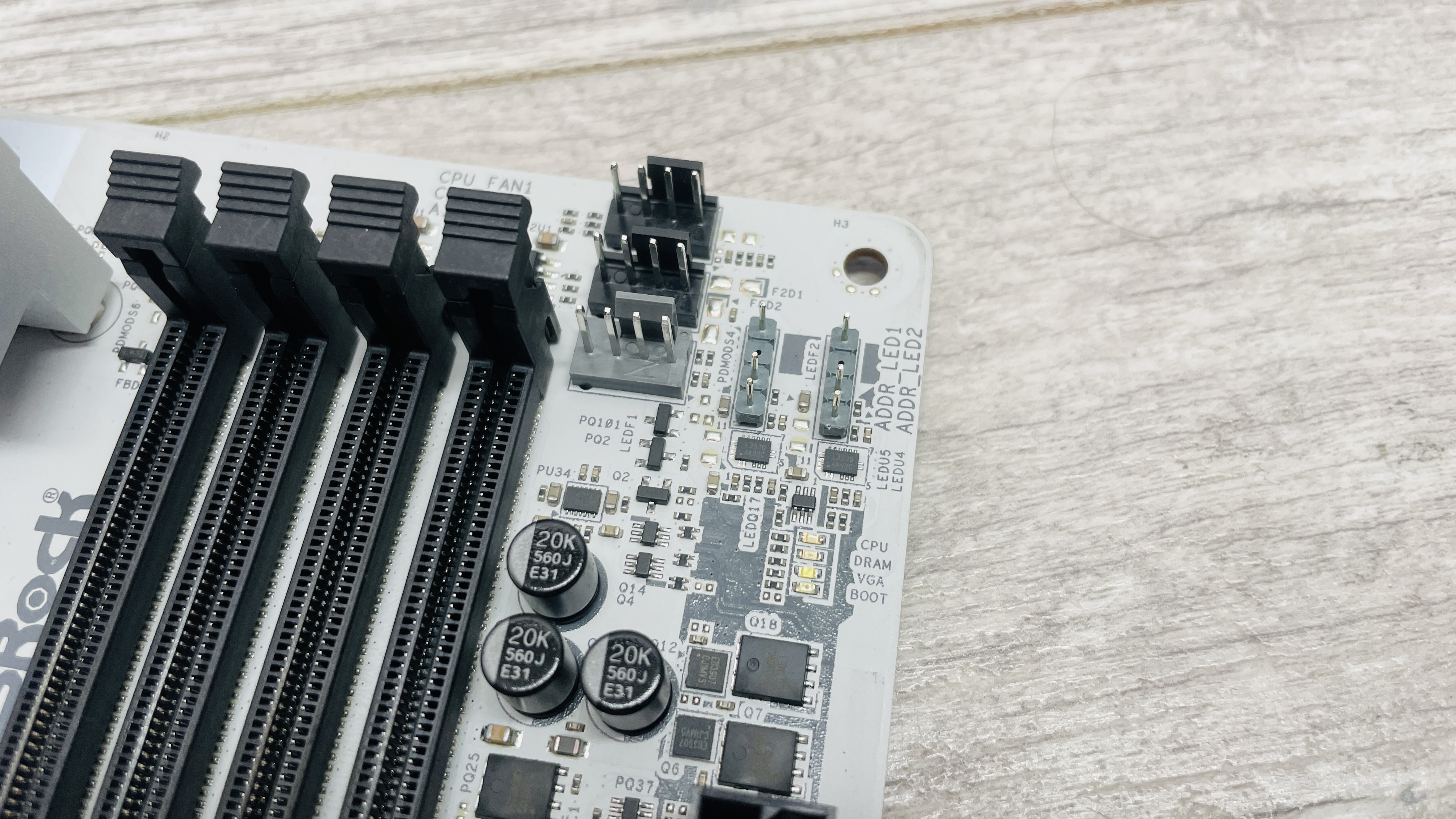
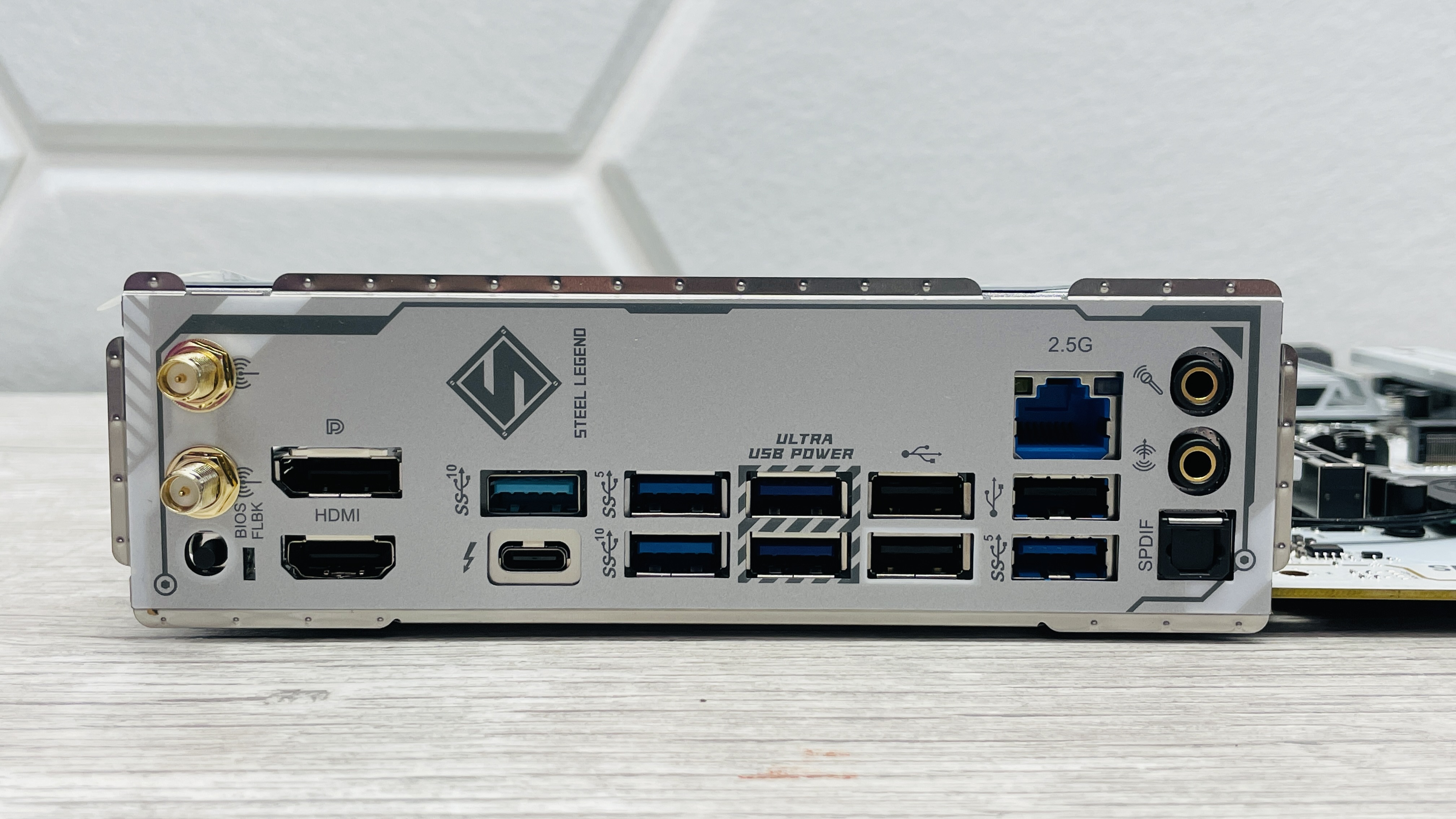
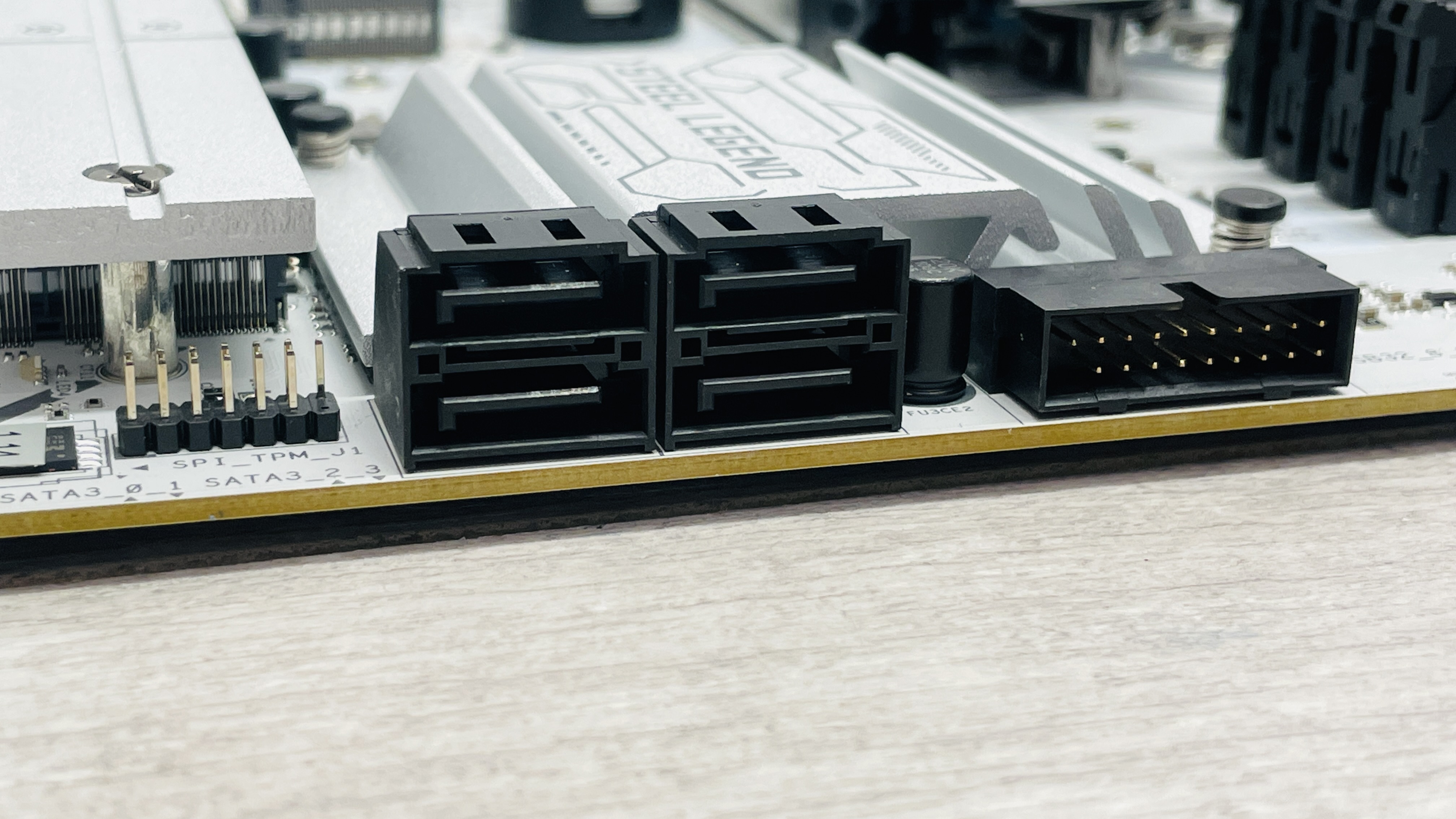
Specifications
Reasons to buy
Reasons to avoid
✅ You want premium features for less: This motherboard throws in some nice surprises that we wouldn't usually expect at this price point, including great audio and M.2 SSD cooling.
❌ You want to overclock: Given this is a B860 motherboard, you won't be able to overclock your CPU on it, even if that's an unlocked K-series CPU.
Especially given some Intel Core Ultra 200S price drops (I'm looking at you, 265K), it's making more and more sense to go for LGA1851 as a budget—or at least reasonably priced—platform. And when it comes to budget LGA1851 motherboards, the ASRock B860 Steel Legend Wi-Fi is where you should be looking.
This has everything you might want to sit under a current-gen Intel CPU, and it even goes beyond what you might expect from its modest price tag in some areas. It has plenty of USB ports, four M.2 ports, four SATA ports, and tons of cooling. Those USB ports are no slouches, either, as you're getting a Thunderbolt 4 Type-C port supporting up to 40 Gbps, and the front panel header supports USB 3.1 Gen 2x2.
The areas where this board goes beyond what you'd expect for its price point, though, are in audio and SSD cooling.
Three of the four M.2 ports on this board have heatsinks, and the main one has a double-sided heatsink to keep those toasty PCIe 5.0 SSDs from becoming too, well, toasty. In his testing, our Antony Leather found it to keep the Gen 5 drive he used plenty cool, which is no small feat.
In fact, the board in general stays pretty cool, even more so than some more expensive boards. Given this is a B860, you won't be able to overclock on it, but it's nice to have everything running chilly regardless.
The combination of this great cooling with audio hardware above what you'd expect for the price point—the Realtek ALC1220—plus the lovely aesthetic, is what really makes this affordable motherboard stand out. On the latter point, you can see from the gallery above, the steel aesthetic looks incredibly premium in the midst of the white PCB and shrouding.
The ASRock B860 Steel Legend Wi-Fi is, of course, not perfect. In addition to no overclocking ability, it also lacks Wi-Fi 7, and while its Wi-Fi 6E should be enough for most people, Gen 7 capability would've been nice. The UEFI isn't amazing either, although given the lack of overclocking capabilities, you probably won't be spending tons of time scrolling through UEFI/BIOS screens anyway.
Still, you can't have it all for this price, and considering what you do get with this motherboard, the B860 Steel Legend Wi-Fi is a great, affordable choice for Core Ultra 200S processors.
Read our full ASRock B860 Steel Legend Wi-Fi review.
Best Intel gaming motherboard (LGA1700)

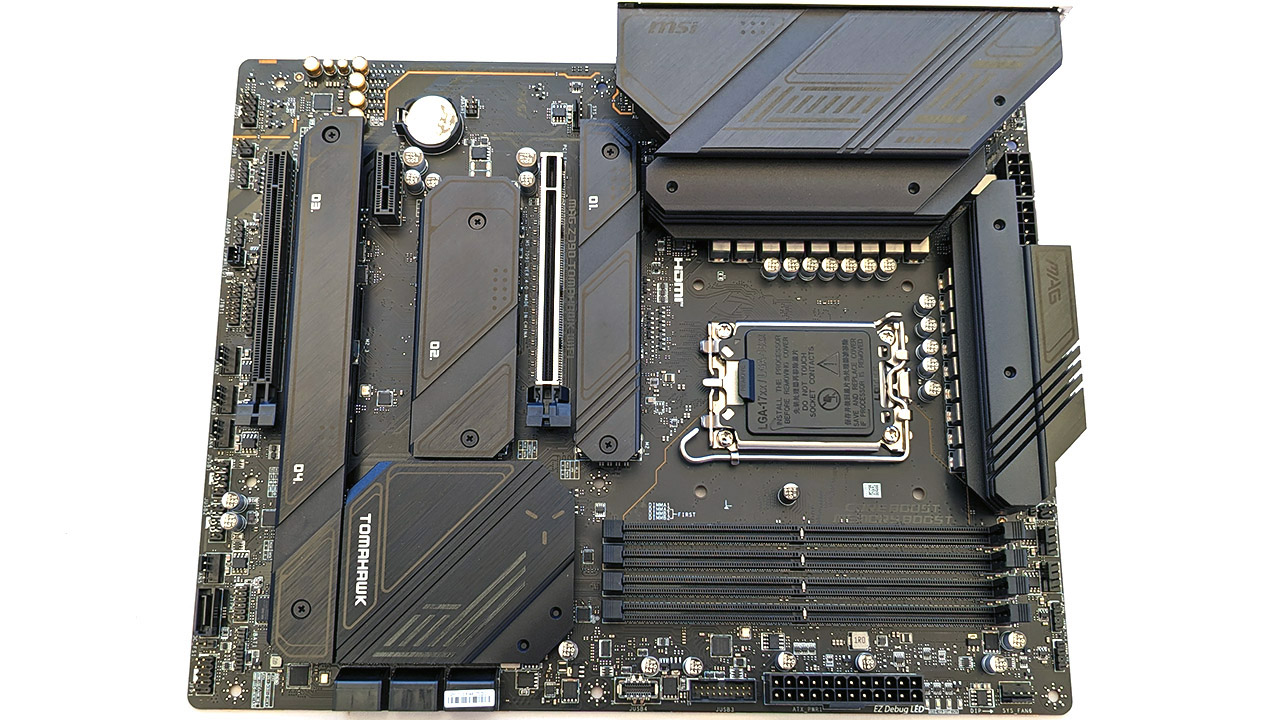
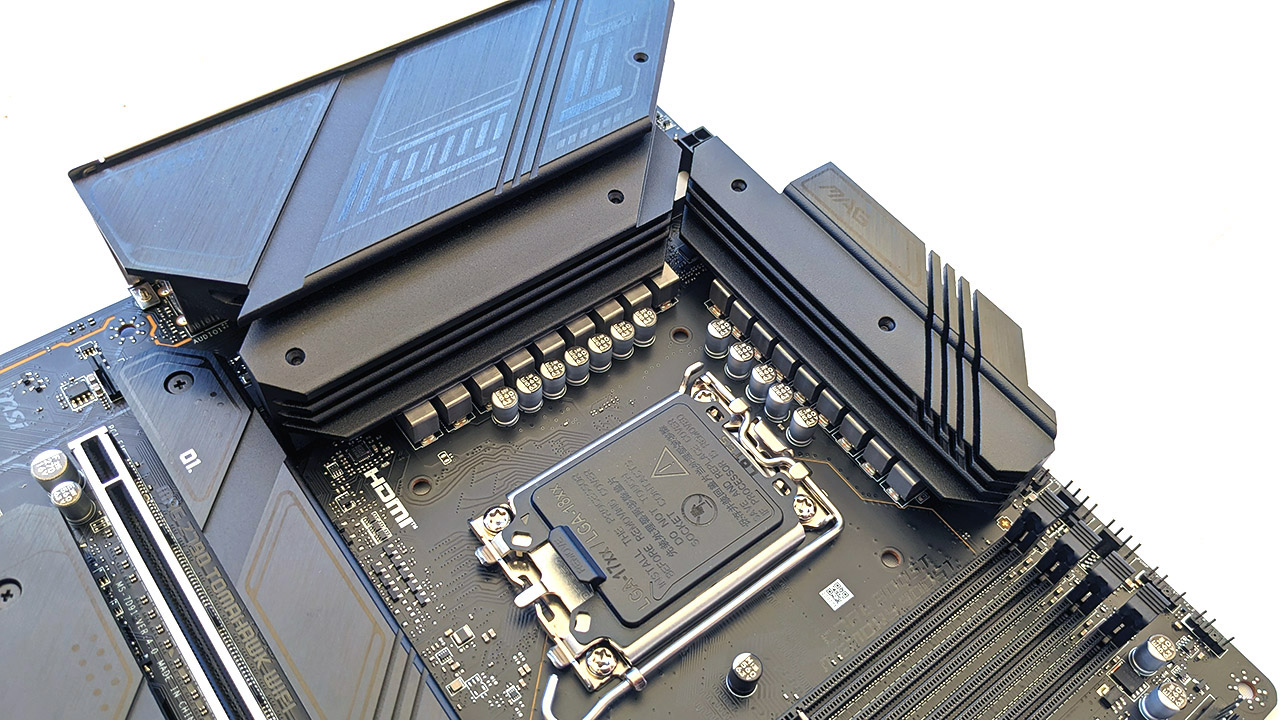
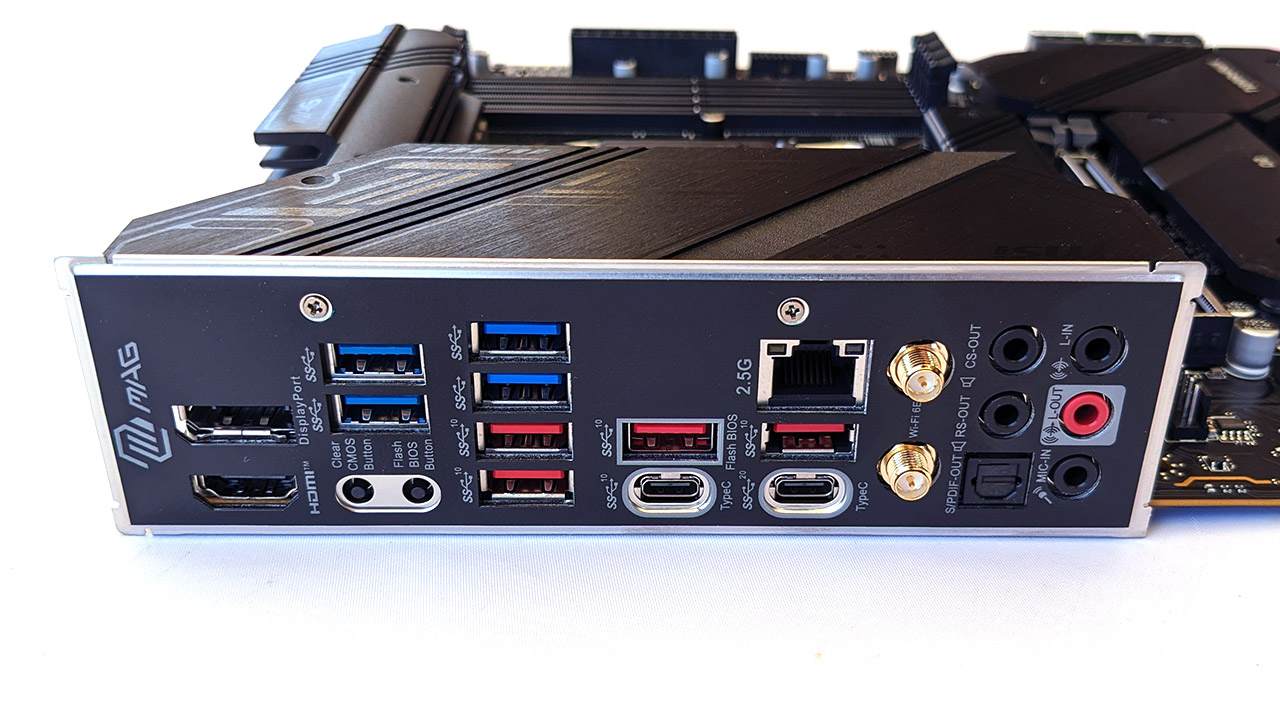
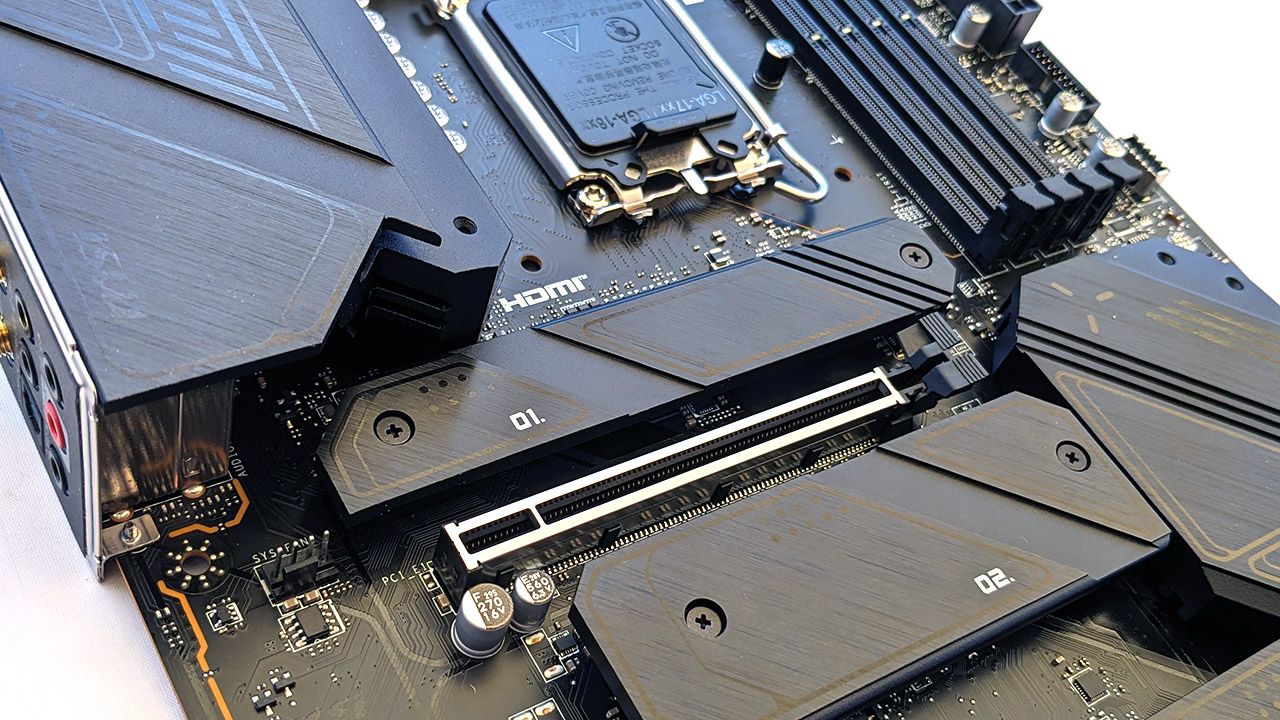

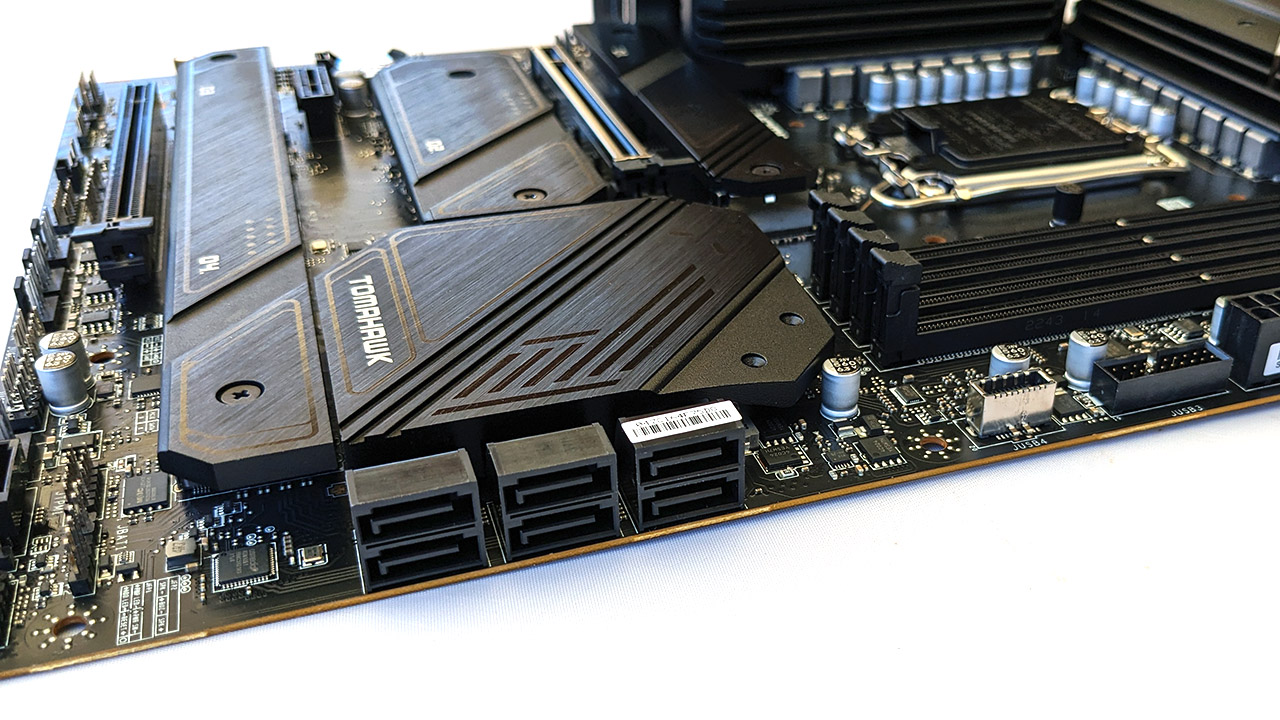
Specifications
Reasons to buy
Reasons to avoid
✅ You want a powerful motherboard without unnecessary frills: The Z790 Tomahawk WiFi offers great value for money, allowing you to allocate more of your budget towards a better GPU or CPU, which will have a much greater impact on your rig's overall performance.
✅You want to run a high-end CPU: The Z790 Tomahawk WiFi features a very good power delivery system, meaning it will happily run any CPU you care to throw at it, up to and including a 14900K (after a BIOS update).
❌You want to buy a PCIe Gen 5 SSD: The Z790 Tomahawk WiFi lacks PCIe Gen 5 SSD support. Though the tangible performance benefits over a Gen 4 SSD are minimal, it is something to be aware of if you want to get the absolute best out of the fastest SSDs.
The MSI MAG Z790 Tomahawk WiFi is the best LGA1700 gaming motherboard you can buy right now, thanks to its wealth of features, support for any 13th/14th Gen Intel CPU, and reasonable price tag. At $230/£200/AU$548, it's not exactly what you'd call cheap, though compared to what some premium tier boards are selling for, it's not badly priced at all. There's tough competition from the other vendors in its price range, though.
You're getting support for four M.2 drives, though none of them are PCIe 5.0 capable—PCIe 4.0 is the fastest you get, but that's not an issue. The Z790 Tomahawk also comes with seven SATA ports. For bulk storage, SATA still has a place, and those seven ports alone may be a deal-maker for some users.
Unlike some PCIe 5.0 SSD supporting boards, such as the more expensive Gigabyte Aorus Z790 Master with its massive M.2 heatsink, the Tomahawk doesn’t need one, sticking with a low-profile design that doesn’t require lots of surface area.
If you make up a checklist of what you want from a motherboard, the MSI Z790 Tomahawk should have most of what you need. Things like USB4 or 10G LAN are what board makers use to justify the price of motherboards costing double the money of the Z790 Tomahawk. The checklist is complete for most users.
Wi-Fi 6E, 2.5G LAN, a strong VRM capable of handling an i9 14900K, lots of USB ports including 3.2 Gen 2x2, a solid UEFI, and a discrete design ready to blend in with just about any build theme. Ask yourself if you need more, because if you do, be prepared to take a big step up in price.
Perhaps its lack of PCIe 5.0 M.2 support counts against and it requires good airflow if you subject it to heavy loads, but the MSI MAG Z790 Tomahawk is still a solid, feature-rich board that delivers a core feature set that will suit 95% or more of users.
Read our full MSI MAG Z790 Tomahawk WiFi review.
Best budget Intel gaming motherboard (LGA1700)

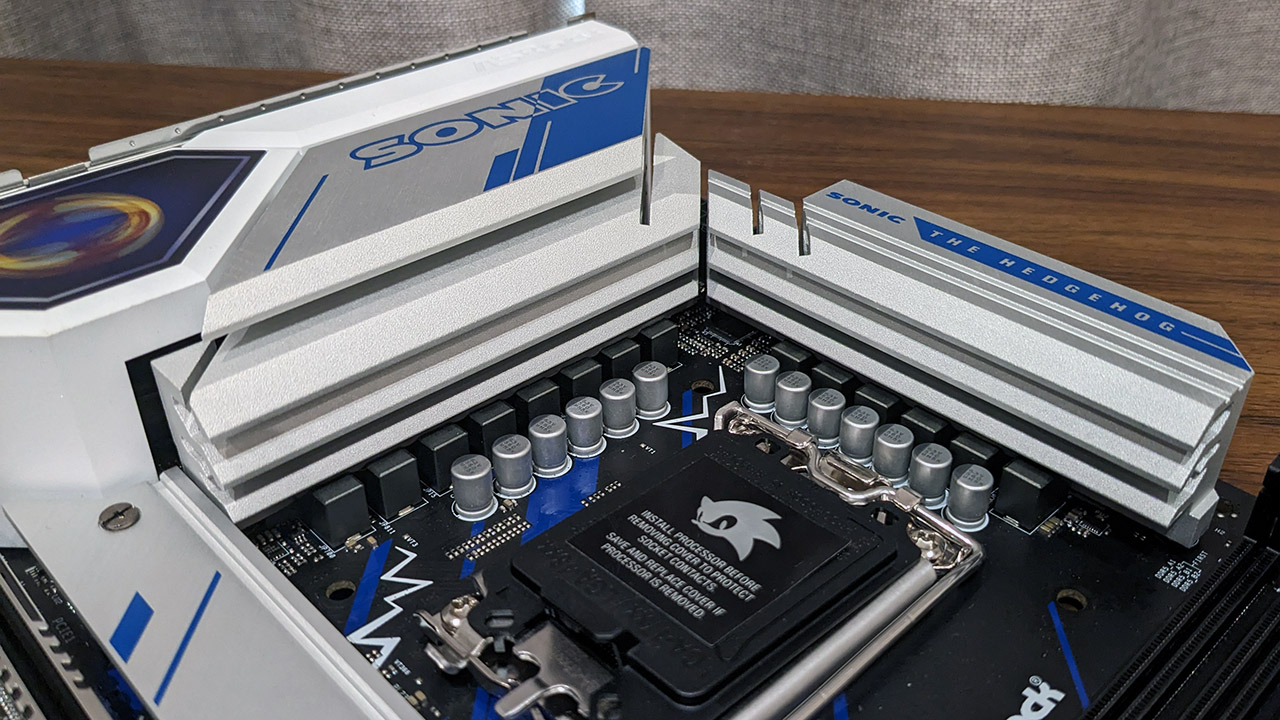
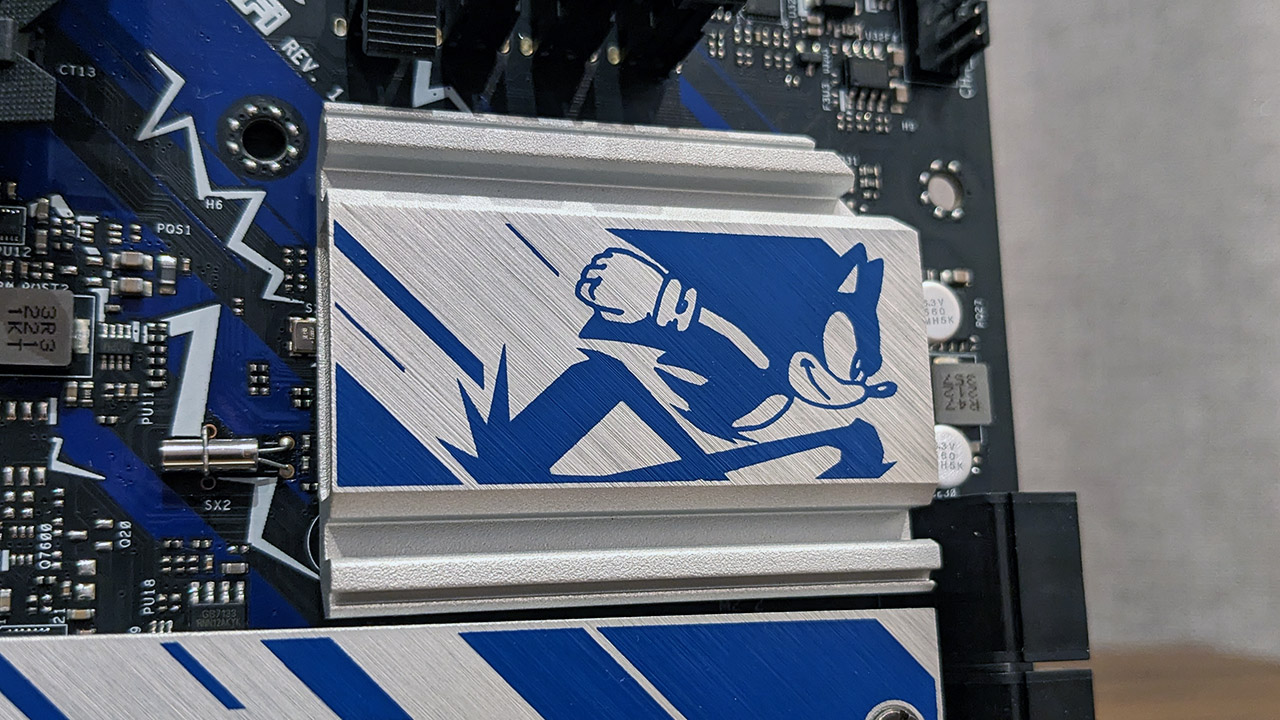
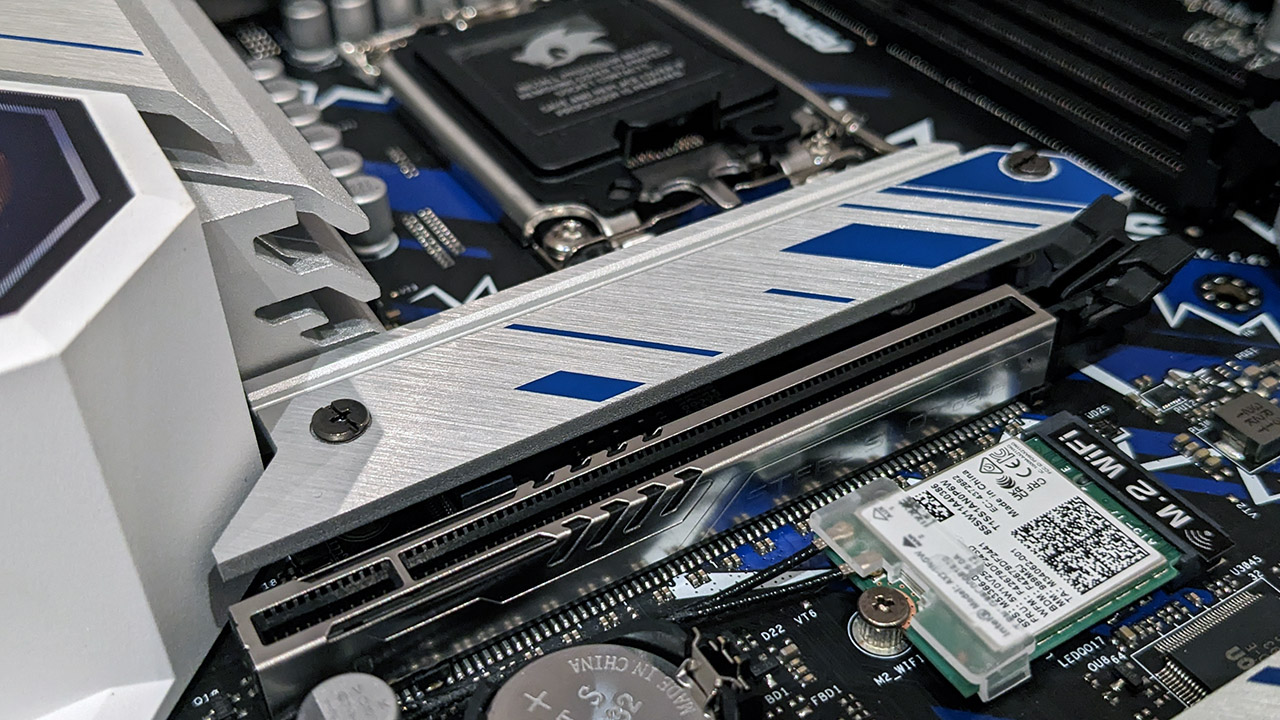
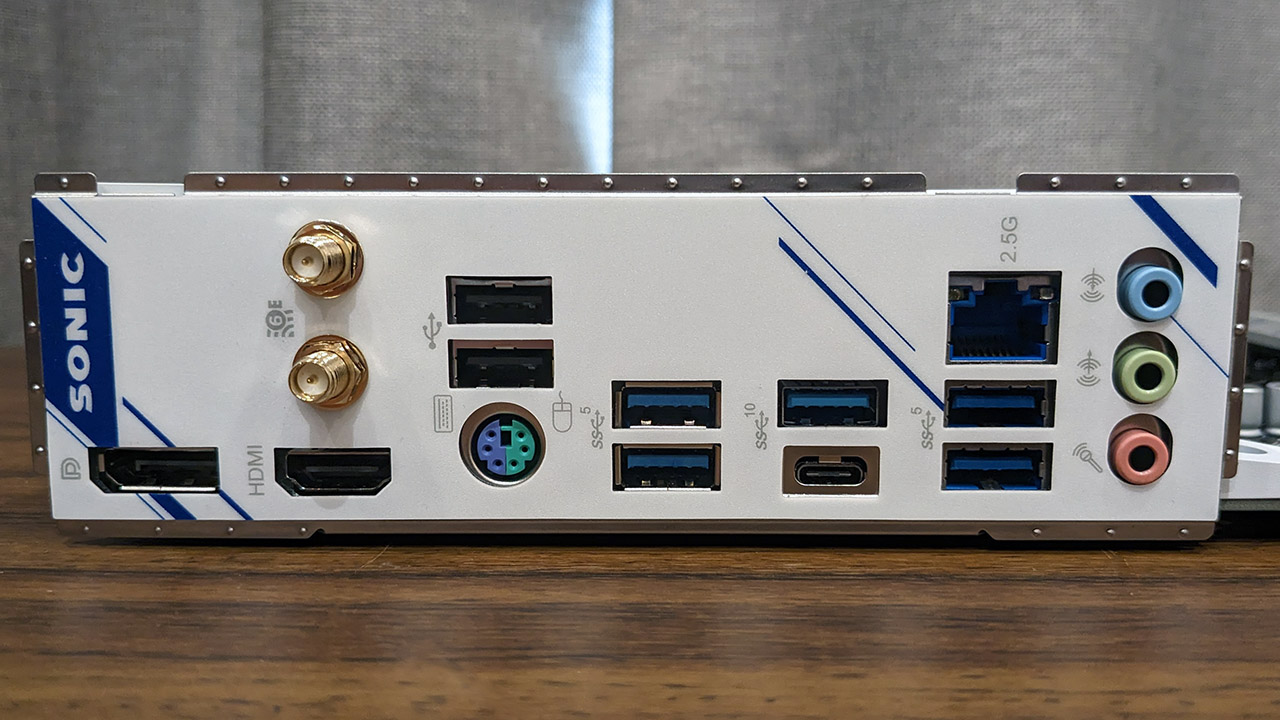
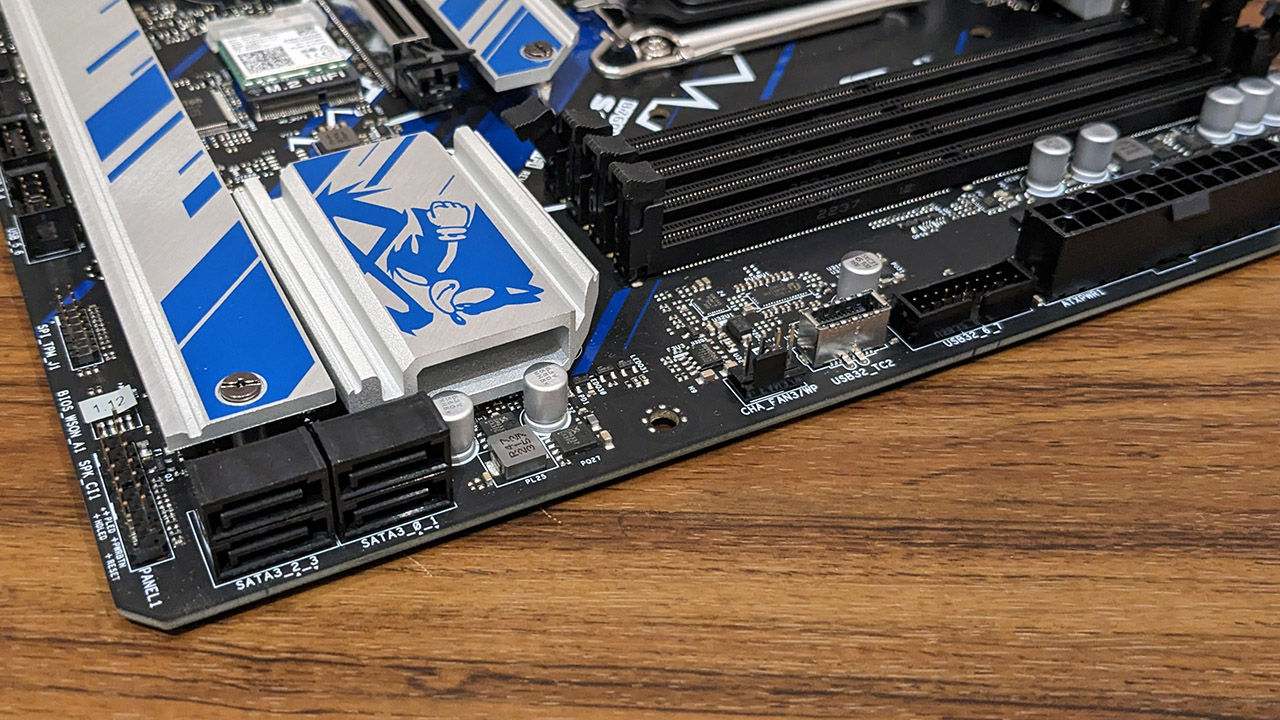
Specifications
Reasons to buy
Reasons to avoid
✅ You care nothing for manual CPU overclocking: Like all B760 motherboards, the ASRock B760M PG Sonic WiFi lacks the ability to manually overclock your CPU. Not that it matters as much these days thanks to the aggressive and well-tuned turbo modes on offer from 12th, 13th and 14th Gen CPUs.
✅You love Sonic the Hedgehog: Aesthetics are usually secondary to features, value for money or BIOS maturity, but who cares about that? This is a delightfully retro-looking motherboard.
❌You need more expansion potential: The B760M PG Sonic WiFi is a micro-ATX motherboard, so it doesn't come with the expansion slot complement of most full ATX B760 boards.
Aesthetics shouldn't really matter when looking for a budget motherboard for Intel 13th/14th Gen CPUs, but the ASRock B760M Sonic WiFi is different—not only is it (subjectively) a great looker, it's feature-rich and very capable, and our choice for the best B760 gaming motherboard.
Mind you, the Sonic branding is everywhere. There's a large blue Sonic stencil on the rear of the board and even the BIOS has a Sonic blue theme. The heatsinks have a brushed metal look, plus you get a line of RGBs underneath the bottom M.2 heatsink. Fortunately, underneath it all is a very fine motherboard.
The B760M Sonic has a good list of features for a Micro-ATX board. It's got a PCIe 5.0 x16 slot and a PCIe 4.0 x1 slot. There are three PCIe 4.0 M.2 slots, all of which are cooled by simple heatsinks, and they're joined by four SATA ports. The four memory slots support 192 GB of memory, though with the latest BIOS, you even have the option of running 256 GB. Not that many will require that much RAM, but it's nice to know the potential is there, at least.
The VRM setup is a decent 12+1+1 phase design with dual 8-pin power connectors. It happily ran an i9 13900K in our testing, and it will accept 14th Gen processors with the newer BIOSes, so you won't have any concerns with a Core i5 or i7 CPU.
ASRock has given its B760M Sonic WiFi some pretty decent rear I/O connectivity. You get four USB 2.0 ports and four 10 Gbps Gen 2 ports, one of which is Type-C. Wi-Fi 6E and Realtek 2.5G LAN controllers take care of networking duties, while Realtek ALC897 provides audio.
It also has HDMI 2.1 and DP 1.4a ports, which add a bit of flexibility for non-gaming purposes. One of the more unusual features you'll see is an eDP header that can be used with ASRock's case-mounted LCD panel.
Intel's B-series motherboards are significantly better than they used to be, and the ASRock B760M Sonic Wi-Fi is a good example of that. It can run a power-demanding CPU and host lots of fast DDR5 memory, and its connectivity options match those of high-end boards from just a few years ago. Users looking for an affordable motherboard won't have any buyer's remorse.
There's a lot of competition in this price range, with all major vendors having decent options. There aren't any that offer the capabilities of the ASRock though, and none of the competing options come with the lovely Sonic theme that sets this one apart from a rather bland crowd.
Read our full Asrock B760M PG Sonic WiFi review.
Also tested
MSI MAG Z890 Tomahawk WiFi
Reasonably priced for a mainsteam Intel LGA 1851 motherboard, the Z890 Tomahawk packs a host of features and functionality. Shame it doesn't perform as well as the competition.
PC Gamer score: 87%
Read our full MSI MAG Z890 Tomahawk WiFi review.
MSI MEG Z890 Ace
With 15 USB ports on the rear IO panel, all 10 Gbps or faster, and five M.2 slots, the Z890 Ace is a peripheral and storage hoarder's dream. Assuming they don't mind the sky-high price tag or merely average gaming performance.
PC Gamer score: 70%
Read our full MSI MEG Z890 Ace review.
NZXT N9 Z890
Pricey, gorgeous-looking, and very well specced, the N9 Z890 could have been a contender for best LGA1851 motherboard if it had better cooling and UEFI controls for fans.
PC Gamer score: 84%
Read our full NZXT N9 Z890 review.
NZXT N9 X870E
Looks great and sports a wealth of features, you'll need a big wallet and be fully into NZXT's ecosystem to choose this X870 board over something else.
PC Gamer score: 80%
Read our full NZXT N9 X870E review.
NZXT N7 Z890
A well-specced Z890 motherboard that runs cool and looks very nice, but you'll need to use NZXT's CAM software to get the best from it, and it's pricey for what you get.
PC Gamer score: 79%
Read our full NZXT N7 Z890 review.
ASRock B860 LiveMixer WiFi
This motherboard comes with heaps of connectivity for the money. It doesn't look half-bad, either. Well worth a look for an Intel Core Ultra PC build.
PC Gamer score: 85%
Read our full ASRock B860 LiveMixer WiFi review.
ASRock Phantom Gaming B850I Lightning WiFi
An affordable motherboard with plenty of ports and great CPU cooler compatibility, this ASRock choice is only let down by a lack of Wi-Fi 7, the ability to cope with PCIe 5.0 SSD heat and a lack of USB4.
PC Gamer score: 81%
Read our full ASRock Phantom Gaming B850I Lightning WiFi review.
Asus ROG Strix X870-I Gaming WiFi
A very expensive but otherwise excellent motherboard with USB4, PCIe 5.0 M.2 and GPU support, an external sound card, and actively cooled VRMs. The running temps are just okay and the M.2 slot is a tad fiddly, but it's otherwise a great choice.
PC Gamer score: 81%
Read our full Asus ROG Strix X870-I Gaming WiFi review.
⬇️ Click to see more gaming motherboards⬇️
ASRock Z890 Taichi Lite
With six full-speed M.2 slots, super speedy USB, and Wi-Fi 7, the ASRock Z890 motherboard is impressive. It is, however, let down by poor VRM cooling, and a big price tag.
PC Gamer score: 72%
Read our full ASRock Z890 Taichi Lite review.
Gigabyte Z890 Aorus Elite WiFi7 Ice
A lovely Z890 motherboard, packed with features and sporting a pretty reasonable price. The MSI Z890 Tomahawk is a little bit faster for only a few dollars more, though.
PC Gamer score: 76%
Read our full Gigabyte Z890 Aorus Elite WiFi7 Ice review.
Asus TUF Gaming B860M-Plus WiFi
One of the first Intel B860 boards we've tested is fine for the money but you're better off spending a bit more on a Z890 board.
PC Gamer score: 70%
Read our full Asus TUF Gaming B860M-Plus WiFi review.
Asus ROG Strix B850-F Gaming WiFi
Fast and modern, the B850-F Gaming has a lot going for it. Bar good cooling, SATA port count, and a reasonable price tag. Oh dear.
PC Gamer score: 68%
Read our full Asus ROG Strix B850-F Gaming WiFi review.
Gigabyte X870E Aorus Pro
This is a really nice X870E motherboard but Gigabyte has priced it a little too high to fend off the MSI X870 Tomahawk for the coveted top pick.
PC Gamer score: 82%
Read our full Gigabyte X870E Aorus Pro review.
Gigabyte X870 Aorus Elite WiFi7 Ice
The X870 Aorus Elite only just loses out to the MSI X870 Tomahawk. It's a little cheaper but it's also a little slower. It is arguably better looking, though.
PC Gamer score: 84%
Read our full Gigabyte X870 Aorus Elite WiFi7 Ice review.
Asus ROG Strix Z790-I Gaming WiFi
Here's a stellar compact board with a ton of features. It's really the crème de la crème for compact Intel LGA 1700 mobos.
PC Gamer score: 87%
Read our full Asus ROG Strix Z790-I Gaming WiFi review.
ASRock Z790I Lightning WiFi
For a Mini-ITX motherboard, it's brilliant for overclocking, especially RAM. However, it's too expensive compared to ASRock's Z670I model and doesn't offer many USB ports, even for its size.
PC Gamer score: 76%
Read our full ASRock Z790I Lightning WiFi review.
MSI MPG B650I Edge WiFi
Good value for money, this dinky motherboard sports plenty of storage ports and connectivity. No PCIe Gen 5 support, though, which does limit its longevity.
PC Gamer score: 81%
Read our full MSI MPG B650I Edge WiFi review.
ASRock Z690 Taichi
Packed with features and serious overclocking potential, ASRock's motherboard is as good as it comes. But like all high-end Intel boards, it's not in the least bit cheap.
PC Gamer score: 83%
Read our full ASRock Z690 Taichi review.
Gigabyte X570S Aorus Master
With a strong feature set, including four M.2 slots, Wi-Fi 6E and loads of USB ports, the X570S Master justifies its price tag.
PC Gamer score: 90%
Read our full Gigabyte X570S Aorus Master review.
ASRock A520M ITX/ac
The ASRock A520M ITX/ac is a strong budget ITX offering. It offers a smart feature set and then there's the genuine bonus of Ryzen 5000 series support.
PC Gamer score: 89%
Read our full ASRock A520M ITX/ac review.
Which CPU chipsets are compatible with my CPU?
Check out the following table to see which processors are supported on different CPU chipsets. Just bear in mind that if you buy second-hand, older chipsets might require a BIOS update to run newer-generation CPUs that are technically compatible.
Chipset | Socket | Supported CPUs |
X870 / X870E | AM5 | AMD Ryzen 7000, 8000, and 9000 series |
X670 / X670E | AM5 | AMD Ryzen 7000, 8000, and 9000 series |
B850 / B850E | AM5 | AMD Ryzen 7000, 8000, and 9000 series |
B650 / B650E | AM5 | AMD Ryzen 7000, 8000, and 9000 series |
B550 / B550E | AM4 | AMD Ryzen 3000, 4000, and 5000 series |
Z890 | LGA 1851 | Intel Core Ultra 200S series |
B860 | LGA 1851 | Intel Core Ultra 200S series |
Z790 | LGA 1700 | Intel Core 12th, 13th, and 14th Gen |
B760 | LGA 1700 | Intel Core 12th, 13th, and 14th Gen |
Z690 | LGA 1700 | Intel Core 12th, 13th, and 14th Gen |
Where to buy
Where are the best gaming motherboard deals?
In the US:
Amazon - Endless discounts on top brand motherboards
Walmart - Quality motherboards from as little as $80
B&H Photo - Save on CPU and motherboard bundles
Best Buy - Deals on Asus, Gigabyte, and MSI motherboards
Target - Masses of big brand gaming mobos
Newegg - Big savings on the best motherboards around
In the UK:
Amazon - Tons of gaming motherboards on offer
Scan - Regular deals on AM4 and AM5 motherboards
Ebuyer - All the top brands for gaming motherboards
Argos - Top brand motherboards for AMD and Intel CPUs
CCL - Discounts on some of the best motherboards
Gaming motherbard FAQ
What's the most important factor in buying a motherboard?
You need to know which processor you want to build your new rig around. Are you firmly tying yourself to the mast of the good ship Intel, with its Alder Lake, Raptor Lake and Arrow Lake CPUs? Or are you going to fly the AMD Zen 4 or 5 flag proudly? Once you've picked your chip, it's down to features, overclocking intentions, and your budget.
Something to bear in mind: Intel's 13th and 14th Gen processors ran into big issues with stability earlier this year, although the problem should now have been fixed on many motherboards with a microcode update. Still, if you are deciding to go Intel, it'd be well worth your while checking for BIOS updates regularly. Good advice in general for any mobo, really.
What really matters when buying a motherboard?
Other than knowing which processor you're going to be fitting, size matters when picking up a motherboard. If you're building out a standard ATX scale gaming PC, then pretty much any motherboard is open to your whims, but if you want to go for a smaller chassis, either Micro-ATX or Mini-ITX, then you'll need a corresponding mobo.
That doesn't necessarily mean sacrificing performance or key features anymore. A single PCIe slot is more than enough for today's SLI/CrossFire-less GPU world, and even some Mini-ITX boards will come with multiple M.2 SSD slots.
The scale will impact pricing, however. Interestingly Micro-ATX boards are often the most affordable, while Mini-ITX options can be the most expensive. We've picked our top two favorite gaming motherboards for each of the main Intel and AMD chipsets to give you the best options around.
Can I overclock on any motherboard?
Definitely not if you have an Intel chip. There are restrictions in place to stop that and you'll need a Z690 or Z790 motherboard if you want to overclock any of the 13th and 14th Gen K-series CPUs. But don't worry about it, as they don't overclock very well anyway.
AMD is more generous, allowing all its CPUs and most of its motherboard chipsets. Basically, as long as you don't go for the cheapest Ryzen boards (ones with an 'A' at the front of its nomenclature), then you're good to tweak. Though again, just as with Intel chips, there are limited returns.
Jargon buster - motherboard terminology
ATX, Micro-ATX, Mini-ITX
The most common form factors/sizes of a motherboard from largest to smallest, which beyond physical dimensions determines which cases it'll fit into and (broadly) how many expansion slots are available. There are other, less common form factors (XL-ATX, HPTX, etc.), but these three are the most ubiquitous consumer form factors.
BIOS/UEFI
Basic Input/Output System and Unified Extensible Firmware Interface connect the hardware and software that lives on the board (the firmware) to the operating system (OS, such as Windows or Linux). They allow you to adjust system-level settings, such as fan speed or RAM frequency. UEFI has largely replaced the older BIOS standard.
Chipset
The name for one or two small processors that allow the various parts of a motherboard to talk to each other. The chipset determines which processor generations a motherboard is compatible with and what add-in cards can be used.
DIMM slots
Dual In-Line Memory Module slots are the sockets on a motherboard where your RAM lives. The number of total slots contributes to the maximum amount of RAM your system can handle, paired with the chipset and OS.
Expansion slots (PCIe slots)
Peripheral Component Interconnect Express slots on the motherboard are designed to accommodate add-in cards like graphics cards, SSD cards, dedicated sound cards, etc. PCIe slots are measured in both length (x16, x8, x4, x1) as well as by the number of data transmission lanes they provide (x16, x8, x4, x1).
It's possible for an x16 slot to only provide 8 lanes of data, for instance, which means the maximum possible data transfer rate is halved (though in many cases, because PCIe provides such a high ceiling for transfer speeds, a lower number of lanes doesn't make a tremendous difference).
SATA ports
Serial Advanced Technology Attachment ports, an interface for connecting storage devices/drives to a motherboard (HDDs, SSDs, optical drives, etc.). The number of physical ports on your board, combined with ports for NVMe storage, will determine the total number of storage drives you can have connected to your PC at any time.
USB header
A connector on the motherboard that allows you to run a cable to the case to add additional USB ports, typically on the front panel (though some cases provide top or rear panel slots as well).
Keep up to date with the most important stories and the best deals, as picked by the PC Gamer team.

Dave has been gaming since the days of Zaxxon and Lady Bug on the Colecovision, and code books for the Commodore Vic 20 (Death Race 2000!). He built his first gaming PC at the tender age of 16, and finally finished bug-fixing the Cyrix-based system around a year later. When he dropped it out of the window. He first started writing for Official PlayStation Magazine and Xbox World many decades ago, then moved onto PC Format full-time, then PC Gamer, TechRadar, and T3 among others. Now he's back, writing about the nightmarish graphics card market, CPUs with more cores than sense, gaming laptops hotter than the sun, and SSDs more capacious than a Cybertruck.
- Nick EvansonHardware Writer
- Jeremy LairdHardware writer
- Antony LeatherContributor
- Chris SzewczykHardware Writer
